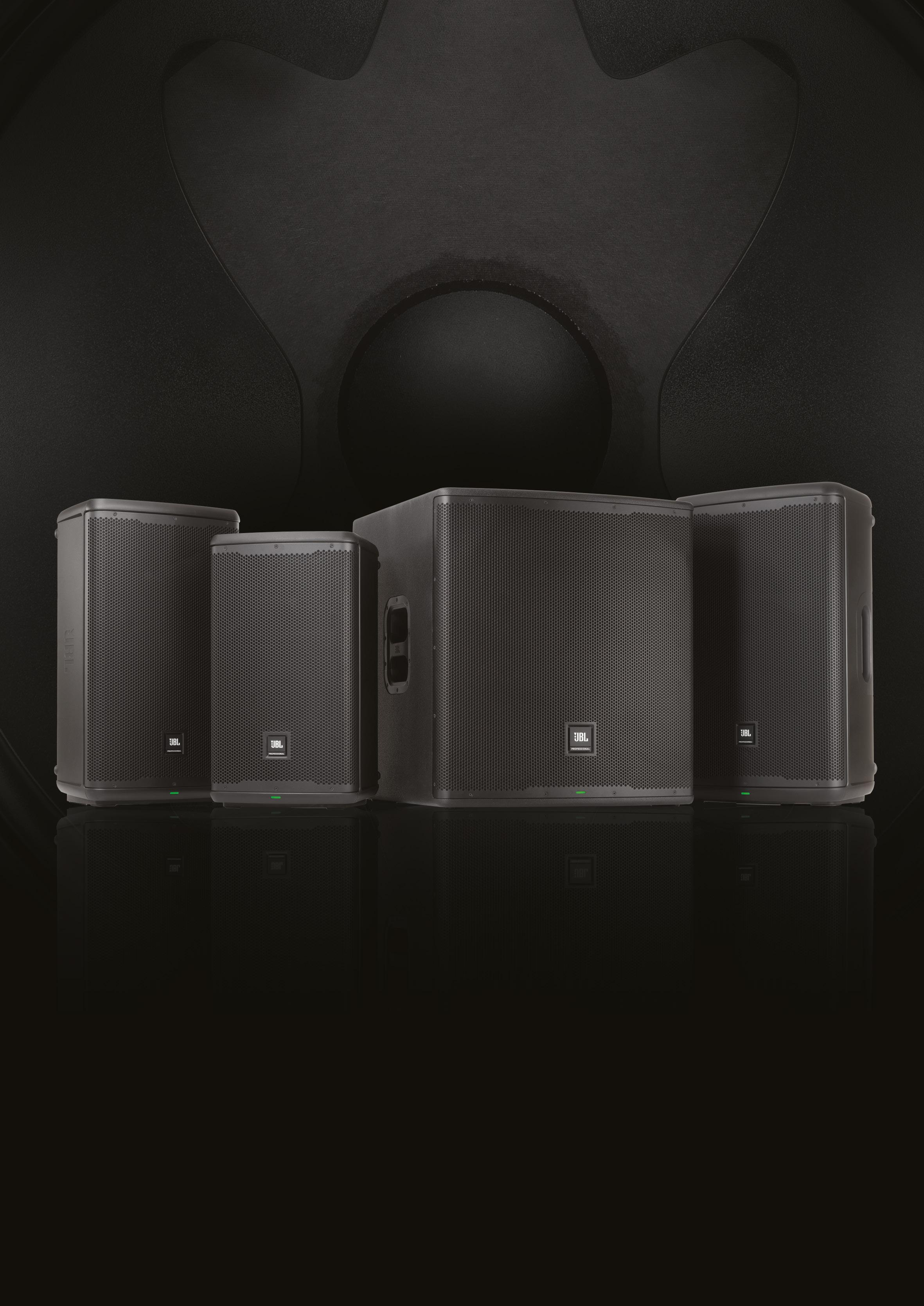









Last month marked something of a rekindling of affection between the UK and Eurovision. Long before the name Sam Ryder entered the public’s conscience, the gulf between the two felt ever widening, with the UK often winding up in the lower reaches of the contest, occasionally achieving the dreaded nul points. In turn, the UK adopted an aloof attitude, almost in anticipation of its inevitable lowly score. But in 2022, something changed.
Ryder rocketed the UK into second place at Eurovision 2022 in Turin, Italy, finishing behind Ukraine’s Kalush. Not only was this an unprecedented finish for the UK given its Eurovision history, it also meant that the UK would be hosting Eurovision 2023 at Liverpool’s M&S Bank Arena on behalf of Ukraine. As a result, the event took on a social and cultural significance beyond almost any other Eurovision in recent memory. In addition to being arguably the biggest platform for new music and artists on the planet, the pressure was on to deliver a production that first and foremost honoured Ukraine, but also showcased the UK’s infrastructure for holding such a spectacle.
And what a spectacle it was. Watched by over 160 million music fans across the world, it was an extravaganza that more than lived up to its billing.
Like any production of this stature, the scale of events taking place on stage is dwarfed by those taking place
behind the scenes. From staging and lighting to the audio and the highly sophisticated networks that invisibly stitch each of these elements together, it’s an undertaking that requires the best in the business to come together, push boundaries, and set new standards.
We were granted a unique and insightful look behind the scenes at the M&S Bank Arena for a full breakdown of the efforts that go into hosting Eurovision. Indeed, we were fortunate enough to hear from some of the key players involved about what it takes to produce one of the world’s biggest and most challenging events.
Plus, we tracked down 2023 winner Loreen, Icelandic performer Daði Freyr, and UK Music CEO Jamie Njoku-Goodwin for their personal insights on the power of Eurovision.

Enjoy.
Daniel Gumble Head of Content




















British soul artist Jake Isaac has been creating tuneful, heartfelt ballads since he burst onto the scene with a handful of EPs and his full-length debut album Our Lives in 2017. The South London singer-songwriter brought classic pop, soul and funk influences together again for his second record, 2021’s Honesty, and now his latest offering: For When It Hurts.
Here he opens up about his musical influences, the meaning behind his self-written, produced and performed single, Start Again (taken from the new album), and explains why he’s proud of where he’s made it to in the music industry.
Where in the world are you joining us from, and what have you been up to?
I’m in Manchester at the moment, having recently moved up here, and I’m loving it! These last few months I’ve been wrapping up my third album, making a lot of it from my studio at home. I’ve also been doing some writing for and working with other artists, both at home and abroad, which has been real good fun. And I’ve also been writing a film..!
That all started in lockdown, when I made my first short film in one day with a small crew on a tiny budget down in Margate, Kent. The film ended up winning a bunch of awards at different film festivals. Soon after that I was approached by a pretty big
film production company to act in my first film, and compose the music for it. I think I’ve definitely been spurred on by those two moments. The one I’m writing currently is on toxic masculinity and what that looks like in the family dynamic. So that’s where I’m at, just seeing how it goes really.
When did you realize that music was your calling?
My dad’s a reverend, and I grew up in church. I was the annoying child at three or four years old that would be playing drums while everyone’s trying to have a cup of tea. Music was a big part of my life growing up – I learned drums and piano, and eventually bass guitar. When I went to uni however I ended up studying marketing, because I was really interested in that
At the same time I was playing in a rock band at uni, coming back down from Cheltenham to London to do gigs as a session drummer. I ended up landing my first music directing gig for Duffy, and I think that was kind of where my songwriting began –starting with writing some really bad love songs in my bedroom at uni.
Then someone heard me singing in a songwriting session, and said they knew someone who would be interested in managing me. A week later that person became my manager, and then two years later I was playing at Glastonbury! That was an incredible experience. That same day I remember releasing my second EP, and it was number one on the iTunes Singer Songwriter charts. Something like two weeks after that I ended up signing to Elton John’s Rocket Music. So the whole come up has been a bit mad if I’m honest, with random moments like that in my journey.
Who were you listening to growing up, and who do you consider to be your main musical influences?
I grew up listening to whatever my dad had in the house, which was often an old American gospel singer called James Cleveland. He loved Paul Simon, especially his Graceland album. And then he had a Mozart compilation that we would listen to in his Volvo when driving long distances. Those early tapes, and then later watching Michael Jackson on MTV, really shaped my life. There was a whole world of music that I didn’t discover until I was older, because we didn’t really listen to the radio when I was growing up.
These days, whenever I’m doing most things, I’ll just listen to old school soul or jazz music. I’m a massive fan of Billie Holiday, Nina Simone, Ella Fitzgerald, Miles Davis, so that’s kind of where I’m at. I think a lot of my inspiration in the past has come from my inadequacies in relationships, and I’ve realized over
the years how self conscious I am of my weaknesses, particularly in that area. I feel like a lot of my songs have come as self reflections of my journey of how to be comfortable in my own skin, and show love and communicate. I think that’s probably part of the reason why I’m writing this film on toxic masculinity. These days my songs and my art are probably more informed by the world around me.
Can you tell us about your songwriting process?
Someone gave me an upright piano recently, and I’ve got a collection of maybe nine or 10 guitars, so I mostly start with one of those two instruments. I’ll hunt out chords and lyrics and just see what comes, trying to shape the song around it feeling good with just me and one instrument, rather than putting it through production. I feel like if it moves me and I’ve been really honest, with the lyrics, in a room on my own, then that’s a great place to start to build a demo record.

“A LOT OF MY SONGS HAVE COME AS SELF REFLECTIONS OF MY JOURNEY OF HOW TO BE COMFORTABLE IN MY OWN SKIN.”

Tell us about your latest single, Start Again

A cousin of mine who writes songs in her bedroom helped me come up with this one, and I produced it all myself. When I made this song I had this thing in mind that it was the cousin to an older party song of mine called Long Road; it’s high energy and has a lot of angst – I think it came from a place of just trying to do better at communicating, at loving, and doing life with people around us.
I suppose it was also a little bit of a stake in the ground, kind of saying, ‘hey, after this, we’re going to go down a bit more of a soulful route.’ So quite literally giving me a chance to start again, in terms of to my listeners and to the people who’ve been doing this journey with me. It’s definitely one for the festival tents, with big energy.
What have you got in the pipeline?
I’ve got a few more songs being released over the next month or two. My third album For When It Hurts came out on April 14th, and soon I’ll be announcing a tour which will probably happen in November. This time we’re doing the UK and Europe with the squad and my band, with maybe one or two festivals in between. And at some point, I’ll be announcing my new film!
SPONSORED BY
When London’s legendary RAK Studios responded to demand and went immersive, they wanted the most truthful monitors available. So they chose The Ones Smart Active Monitors, finding them unbeatable for neutrality, imaging, fatigue-free listening and consistent mix translation.

RAK now enjoys a flawlessly cohesive and scalable immersive system that’s also pinpoint accurate in level, distance and frequency response alignment, thanks to our GLM calibration software.
So, if you’re serious about going immersive – whatever your room size – explore our industry-leading solutions online. Visit www.genelec.com/immersive-hub

“Genelec have set the bar for immersive monitoring.”
Emma Townsend, RAK Studios
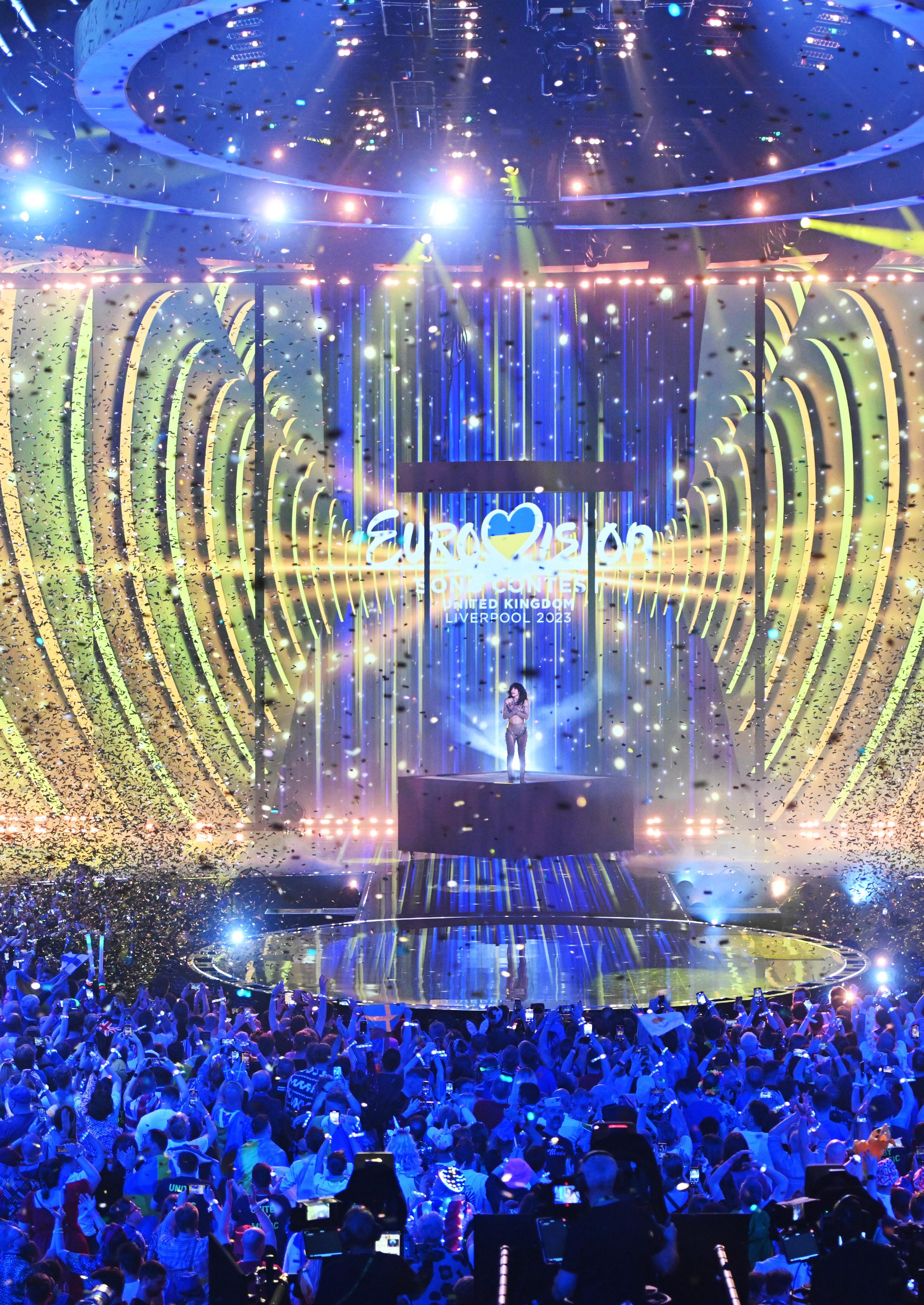

The UK has long held a unique relationship with Eurovision. As one of the most widely viewed music events on the planet its significance cannot be denied, but for the past couple of decades, the nation’s performance at the contest had almost become something of a running joke. Despite submitting winning entries in the ‘60s, ‘70s, ‘80s, and ‘90s, the UK’s Eurovision fortunes have taken a turn for the worse in the 21st century, often finishing in the lower reaches and, on more than one occasion, finishing last. Indeed, in 2021 James Newman’s Embers became the second UK entry to receive nul points. As such, the country slowly fell out of love with Eurovision, regarding it as a kitsch novelty showcase, instead of an unparalleled platform from which to showcase new music to a global audience of almost 200 million fans. That all changed in 2022.
Following Newman’s bottom-placed zero points offering the year before, few could have predicted the impact a certain Sam Ryder would have not only on the UK’s Eurovision fortunes, but also in becoming a star almost overnight with his entry Space Man . That year he pushed the country to a second place finish, losing out to winners Ukraine yet
notching up the most points ever for a UK entry. His success also had implications beyond his own success, with the UK installed as the 2023 host on behalf of Ukraine. As such, Eurovision found itself being embraced and celebrated on UK shores like never before.
Liverpool’s M&S Bank Arena was the chosen venue, setting the stage for a Eurovision outing that scaled dizzying heights on every level, from the performances themselves, to the head-spinningly complex production behind the scenes. It also served as a stark reminder of why Eurovision remains such a beloved event the world over, not just because of the music, but also the spirit of diversity and inclusion that flows through its veins.
“I honestly feel like the most important thing for all of us is to be creative,” 2023 winner, Sweden’s Loreen ( Tatoo ), told Headliner . “It’s hard to be prejudiced when you’re creative. When you’re in a creative, happy space, it’s the best antidote to all these crazy decisions we make and a lot of the problems we see in the world.”
The show’s ability to help break stars such as Loreen also feels as potent as ever. And according to previous Iceland contestant and 2023 performer Daði Freyr, Eurovision is as big as it gets.
“I don’t think there is a bigger platform for a new artist than Eurovision,” he tells Headliner . “If you get into the finals, you are performing your song in front of 180 million people. That’s the best ad you can ask for. It’s a really nice stepping stone if you really use it and capitalize on it. It can really change the trajectory of your career.”
Freyr’s sentiments were echoed by UK Music CEO Jamie NjokuGoodwin, who also hailed the power of the Eurovision platform in uniting people through music.
“At UK Music we talk a lot about the power of music to unite and bring people together, and there is no greater example of that than what we’ve seen with Eurovision over the last couple of weeks and months,” he said in conversation with Headliner . “We’ve had people of different parties, different generations coming together to celebrate Eurovision. And it puts a global spotlight on the UK and our values and it’s great to show how we can bring people together with music and the potential of music to bring disparate people from across the globe together.”

“I DON’T THINK THERE IS A BIGGER PLATFORM FOR A NEW ARTIST THAN EUROVISION.”

Of course, none of this would be possible without the considerable talent and efforts of the production teams that bring sound and visuals together to create such a spectacle. From the lighting and audio elements through to the comms and networking technology that knits it all together for those in the room and watching at home, it’s truly a mammoth task.
Arguably the most crucial technical element to consider when it comes to the smooth running of Eurovision, an event of such scale and high pressure, is the careful selection of the mixing consoles. DiGiCo have supplied their high-end digital desks for the event for a number of years, and 2023 was no exception.

In this instance, leading pro audio equipment supplier Britannia Row selected two DiGiCo Quantum 7 dual engine, 256-channel mixing consoles for front of house, two Quantum 7s for monitors, along with two SD12 compact digital mixing consoles at front of house to contend with the presenter’s audio feed. There was also a third Quantum 7 in a duplicate setup in the soundcheck room, as well as an SD11, which was used by the playback team for monitoring and bussing audio elements together. With so many channels and mixes to contend with, the need for systems that could handle such a high channel count, with
triple redundancy backup, meant that specifying this selection of powerful DiGiCo consoles was a no brainer.
“The programming of the console made a big difference to what the engineers were able to do in terms of snapshot recall – the ability to label and name things clearly, move them around easily, and do all the patch changes quickly,” explains DiGiCo product specialist Dave Bigg. “It’s the speed and the flexibility of the consoles that makes them the top choice, but at the end of the day it always comes down to channel count and bus count, because that’s what they need to do the show. From a console manufacturer’s point of view, we’re very proud to know that people choose our consoles to do these shows and rely on them to deliver the results they need.”
Britannia Row was in fact responsible for handling every aspect of the show’s audio, including the audience mics for broadcast, delivering analog and MADI to the OB trucks, presenter IFBs, time coding, and distributing the Dante and AVB networks. Forming the backbone of the system was a slew of network boxes and routers from DirectOut, which proved integral when it came to distributing all the playback and radio mics. This ecosystem meant that any redundant switching over required, in case of a system failure, was taken care of.
“The design team did an incredible job of making the show look huge in a relatively small space, and really maximizing the space available,” Britannia Row lead system designer Josh Lloyd tells Headliner. “That did make it quite challenging in terms of the design, but I think we found a really good middle ground that worked for everyone.
“The atmosphere in Liverpool as a whole was amazing, and the city did a great job at hosting. From a production point of view, Eurovision never cuts corners; they’re willing to pay to do things properly and I think that really shows. It’s a very, very slick show.”
When it came to selecting the speaker and line array system, L-Acoustics’ L Series was an obvious choice for a number of reasons, combining a number of advantages in one package: “It’s powerful but compact and lightweight, has wide vertical coverage with very precise coverage control, and allows for a choice of cardioid or supercardioid patterns,” L-Acoustics application engineer Sergey Becker tells Headliner. “The L Series is also much easier and quicker to deploy, which made it perfect for Eurovision. Brit Row had already used it – for the first time in the world – on the Brit Awards, so they knew the benefits it would offer.”
“THE DESIGN TEAM DID AN INCREDIBLE JOB OF MAKING THE SHOW LOOK HUGE IN A RELATIVELY SMALL SPACE.”

Britannia Row, along with ESC 2023’s head of sound Robert Edwards, also specified an extensive system comprising Shure Axient Digital, PSM 1000 in-ear monitoring, AD600 Axient Digital Spectrum Manager, ShowLink, Wireless Workbench Software and Wavetool Software to provide the robust and solid solution required.
“We needed a reliable system that we could be confident in pushing to its limits, and the Shure systems provided a comprehensive set of tools and products to manage this effectively,” says Britannia Row’s Tom Brown. “The reliability and known robustness of the PSM 1000 in-ear monitors, huge tuning range of the Axient Digital Wireless System, frequency diversity, and invaluable support of ShowLink were imperative.”
As part of the equipment, Shure Wireless Workbench (WWB) software was used for monitoring the signal of all radio mics and in-ears, forming one Shure ecosystem.
“We pushed Wireless Workbench to its limits, using all the tools available in the software to help artists feel fully comfortable on stage,” adds Britannia Row’s Josh Lloyd. “The AD600 Digital Spectrum Manager was also very useful - the monitor antenna receiver and six inputs meant we could monitor antennas on and off stage. This unique tool made our workflow much quicker and efficient.”
Throughout the week-long extravaganza, music for all of the televised live shows and rehearsals was mixed on the Mixbus, a well-equipped music and audio outside broadcast facility that now incorporates an Evertz Studer Vista X console.
BAFTA-winning Andy Tapley (of BBC Studioworks and known for his work on Strictly Come Dancing and RuPaul’s Drag Race) was the sound supervisor on the Mixbus, handling all mixing for the live shows and rehearsals, as well as being responsible for the console programming.
“The snapshots and the automation are incredibly quick to achieve so Andy, who was mixing, was able to do a rehearsal and then within five seconds we could flip to an off-tape rehearsal,” notes Conrad Fletcher, whose SounDesign company owns the Mixbus. “In that time he was able to update all the automation on the desk very quickly. Pretty much every function is only one button push away to be able to do quite sophisticated things.”
The team gets to rehearse with each act the first time, from which they’ll get a mix together.
“They’ll give me copious notes about what effects they want on their vocals and then on their BVs, so I pre-programme as much of that as possible,” explains Tapley. “They listen to the mix that I’ve done and they can look at the video as well as their performance and that’s when you get feedback from them about adjustments that they want made. They are so focused and obviously this is a massive thing for them, so we want to give them the best that we possibly can. We work very hard to give them exactly what they want. In the end, we got there and we were very pleased with the result.”
The Mixbus handled the main music mix going out to transmission, with the Vista X mixing anything musicrelated coming through the Mixbus. Throughout Eurovision week, the Mixbus team were responsible for mixing 45 songs live to air, including guest artists such as Sam Ryder, Rita Ora and Rebecca Ferguson and contestants.
“The Vista X has a number of key features that make it a fantastic console for live entertainment shows,” adds Mark Hosking, director of international sales, Studer-Evertz Audio Solutions. “The sonic quality of the mic pres was a very important point as was the ability to use the extensive Cue List and Snapshot features to manage the rapid changes between acts, firing off MIDI changes to recall external effects settings and completely resetting the console from act to act at a touch of
a button. The audio design meant that Mixbus was pretty much its own baseband triplicate ecosystem audiowise, providing resilience from any wider network issues.”
Once the stereo mixes were completed, they were handed over to another BAFTA winner, sound supervisor Richard Sillitto, who added presentation and audience on board NEP’s UHD1 scanner. He also provided the 5.1 surround mix. Graham Norton’s presentation was added separately, and an international feed was provided to each country so that they could add their own commentary.
“The console was faultless and the truck is fabulous,” agrees Tapley. “What Conrad has done with the Mixbus is build something which not only is technically superb, but it’s an aesthetically amazing place to work in as well. It is the attention to detail that sets it apart from anything else – it was such a comfortable, great experience working in it.”
Every technological aspect of this year’s Eurovision was planned to a tee, leaving absolutely no room for error. Serving another essential role in the smooth running of the live shows was Riedel, which was responsible for the delivery of the accreditation and access control solutions, fiber backbone, signal distribution, extensive communications setup and commentary solutions.
Riedel has been handling the communications and signal distribution systems for the Eurovision Song Contest for years, with the scope of works varying each time depending on the needs of the venue. Unlike the line arrays in the arenas, lighting and mics, you won’t see any of Riedel’s tech on screen or the stage, but rest assured, it’s working away hard behind the scenes, and without it, the Eurovision live shows would come to a grinding halt. As soon as the host city is announced, the Riedel team springs into action by arranging a site visit to assess the technological needs and potential set up for the run of shows.

In terms of the accreditation and access control solution for Eurovision, Riedel supplied the accreditation backend, including interfacing to the EBU’s main accreditation system, five work stations for the accreditation center (including RFID printers), 12,500 accreditation passes, 20 turnstiles and five RFID scan poles for access control, as well as various associated services.
Meanwhile, Riedel’s fiber backbone included approximately 16km of temporary fiber cabling and associated services. In terms of the all-important signal distribution and management, this was handled by MediorNet fiber-based stage boxes in a 22 x 20 gig Riedel standard rack, which processed approximately 200 audio and 400 video signals.
“MediorNet has a link capacity of 20 gigabit on the bandwidth and it can do video transportation from A to B, and audio,” says Yung Min Lee, Riedel senior project manager. “We can connect them through one fiber cable and distribute audio and video over Ethernet, which is why we chose it for
Eurovision. If we didn’t use MediorNet, you would have had a separated video network, an audio network and an IT network – which is three times more cabling. With MediorNet, we can do it with one device and with one fiber cable.”
The extensive communications solutions for Eurovision included associated services and components integrated and interfaced in Riedel’s main communications system, including a Motorola analogue radio infrastructure, 32 radio channels (simplex and semiduplex), 250 handheld radios plus associated accessories for broadcast and show related communications (show call, TV crew, stage management) and

for Eurovision’s complex needs. The beltpack itself features six intercom channels and a separate ‘reply’ button for a quick reply to the last caller. “And it is in real time,” Lee adds, “so as you can imagine, there were so many people relying on that. You can listen to six channels simultaneously, or select one as the most important one, you can control a wireless intercom with a button on a panel, you can control volume, you can do point to point calls or talk to a radio channel. It was one of the main communication tools for all the stage and floor managers.
Riedel’s commentator solutions included 45 CCP commentary panels, 90 monitors and centralized routing facilities including commentary and coordination lines for 30 MCRs in 24 countries across Europe and the world. The commentary for each country is a key part of the experience for viewers at home during the live finals as each gives their unique take on each country’s introduction film and chosen singer.
a digital Tetra radio infrastructure (DAMM) for non-broadcast and show related communications (venue, catering, cleaning, power, hospitality, etc). Also included were 30 talk groups, 270 Hytera handheld radios plus accessories, over 100 Riedel RSP Intercom panels, 170 Riedel Bolero full duplex wireless beltpacks and associated accessories and 10 Riedel C3 full duplex wired beltpacks.
Riedel’s Bolero wireless intercom system is capable of supporting up to 250 beltpacks and 100 antennas in a single deployment, which made it the most effective solution possible
As Lee is looking ahead to Eurovision 2024 in Sweden next year, he is satisfied that 2023 was another technically-successful show: “It went very well and everything worked out,” he says. “The grand final was a huge success. This was one of the best lighting and stage designs I have ever seen at Eurovision over the last four years, so it will be quite a big task for the next country to top that! We finished the show this year with a smile.”

Despite winning this year’s very close Eurovision Song Contest –making her the first female artist to win the competition twice and also helping Sweden equal Ireland’s seven Eurovision wins – Loreen is also keen to talk about the role of meditation in her life, and her main priority being to connect with people through her music and inspire others to be creative. Back in Sweden, she chats to Headliner about the magic Moroccan song she played backstage to help her win, writing Tattoo, how creativity might just save the human race, and how she plans to build on this huge moment.



“I took four days off shortly after the competition. Four days!”, Loreen says with a laugh. “So I went to a tiny island in Sweden where there are hardly any people, just me and my dog. I needed to recharge so I can go back out into the world, authentic and present.”
Nature, the art of being present in life and spirituality are Loreen’s favorite things to talk about, but that doesn’t mean she speaks in a slow, veeringon docile style of speech that many stereotype nature and meditation loving-types as having. She is highly animated and speaks with a great degree of presence and melody in her voice, often letting out a hearty laugh mid-sentence — little things that make her such a likable Eurovision winner.
For the Eurovision artists, it must be a very curious experience, flying out to Liverpool and becoming friends with fellow singers who they are also competing with. The Eurovision final itself is more than four hours long, and it all comes down to a three-to-four minute slot where you perform the song that got you to the final.
Loreen approached this heady madness in a pretty unique way: “If you passed my little room where we were set up, it was like a little meditation studio. It is a mess, being in that arena with so much noise and so much going on! I would be there for very long hours, but I didn’t mind because in the times when there wasn’t preparation or rehearsal, I could go back to my room with my sage and sit in meditation. But for those who don’t like to do that, it can get very intense backstage, most definitely!”
In case you’ve been living under a rock that is also expertly able to deflect any Eurovision-related content, this year’s final was held in the UK for the first time since 1998. Followers of the contest will be acutely aware that
the United Kingdom has had a pretty torrid time at Eurovision since then, until Sam Ryder’s spectacular Spaceman performance earned a second-place finish, and perhaps may have won had it not been for Kalush Orchestra’s Stefania performance also being excellent, and sympathies towards an invaded-Ukraine being so high.

The invasion from Russia of course also meant Ukraine was unable to host as winners, so Liverpool was the fairly common sense alternative as one of the most famous music cities in the world. Before each performance, a video segment would show a beautiful location in both the Ukraine and the UK, and then introduce the artist in their home country. Loreen was seen in a stunning bit of Swedish nature, carrying out some holistic practices.
There is a good reason she’s so passionate about discussing these subjects; she feels they’re vital for and intricately connected to her music and creativity.
“It’s about being authentic, really knowing what my creativity is and what my sound is; asking what my identity is, my core? In my opinion, you really need to spend time alone with yourself and connect with yourself to discover this and for it to be really authentic. I discovered this as a kid when it was just my mum and five other siblings — you can imagine the household was just crazy, so creativity became my sanctuary. Meditation, and that spiritual way of seeing creativity, is really necessary for me to be able to create.”
If you’re still unconvinced, it’s worth noting that Loreen feels the unique combination of her spiritual inclination and her Moroccan heritage from her parents lead her to a Moroccan chanting song. This became a song she would play on repeat for over 20 minutes on a portable speaker before rehearsals, the knockout events and the final. The secret ingredient behind her victory, perhaps?
“The other artists and the tech crew would be thinking, ‘Oh my god, here she comes with her speaker and that spiritual music.’ It’s very Moroccan in its style, going round and round on certain drums, and the lady chants these very powerful words. I would listen to it over and over again and it would get me so charged up before I went on stage.”
So there you have it — hunt down this song, and you too could win the Eurovision Song Contest. If you haven’t seen her performance of Tattoo in the grand final yet, you really should head to YouTube immediately. She begins sandwiched between two platforms, beaming out visuals of sand and the desert, which matches her outfit, complete with huge stone nails, exposed washboard abs and her trademark black, flowing hair and fringe that covers a fair deal of her face.
And thankfully, the brilliant visuals and choreography (which Loreen says simply came to her without any help from a choreographer) are simply in support of a truly killer song.
While some Eurovision entries are a little caricature-ish and unmemorable, Tattoo is a song demanding to be heard by millions of people, and perhaps Eurovision was the mere vessel for that (at the time of writing, it’s had more than 91 million streams on Spotify alone).
A thumping piece of eurodance-pop, it’s elevated by Loreen’s almost overwhelming vocal performance and lyrics about true, authentic love only being achievable by coming through times of struggle.
“Both sides are necessary,” she says. “You can’t experience love if you never have that other side. It’s like day and night. You can’t bypass any of it. We’ve built a society where we think the grass is greener on the other side. But then we’re looking at our lives, thinking, ‘Why am I not able to experience love?’ It’s because we’re not willing to go through certain pain. It’s like being hungry: you’ll enjoy that food once you get it!” she laughs. “I don’t mean unnecessary pain, like staying in a destructive relationship, but the everyday struggles that we can’t bypass in life.”

Regarding how the performance was going to look, Loreen says (with another genuine laugh): “I have a new nickname now, Sandstorm Loreen! Because it is a sandstorm performance. But this is the beauty of being creative, and I believe all of us, the whole human race, are creative. We create things out of nothing. When I recorded the song, I just knew what the scene was going to look like. Not down to every detail, but I could see the colors, this beautiful, cloudy paradise. I know it sounds spooky, but it all came to me while I was recording

the song. Before music, I did a lot of work in editing videos and in movies, so I think understanding camera and cinematography language really helped me bring these scenes to real life.”
The moment Loreen was announced as this year’s winner was endearing and wonderful. With Finland’s Käärijä doing very well in the public vote and jumping up to first place, the screen split to show him and his only rival to win, Loreen. As national treasure and host Graham Norton did an achingly
long dramatic pause after, “Sweden, the public has given you…” Loreen was left with her head to one side and eyes closed, as if in actual physical pain, even mouthing, ‘Come on.’ As Norton then reveals, “243 points!”, there’s a split second where her brain confirms to her these are more than enough points to make her the winner, and the agonized expression turns to pure joy and elation.
In terms of similarities and differences, and the things that connect her 2012 winning song Euphoria to this year’s
Tattoo, Loreen thinks that “there are similar dynamics and similar movements. Euphoria is quite a mystical and hidden kind of track. It’s very dark, actually. Whereas Tattoo is right out there. Euphoria is night, moonlight, and Tattoo is day time and sunlight. So it goes back to yin and yang. I was a lot more present this time, maybe because I knew what to expect and could enjoy myself more.”
As well as being the first woman to win Eurovision twice, Loreen’s two wins have hugely helped Sweden on its way to equalling Ireland’s record seven wins at the contest. It was fairly inevitable that one country eventually would, as Ireland has sadly joined the UK in struggling at the contest from the 2000s onwards, that record seventh win many moons ago in 1996.
Headliner asks if she’s excited to have helped put Sweden on the musical map again, best known for such exports as Abba, its death metal bands like Meshuggah and At The Gates, and its traditional folk music. Loreen’s win shows that Swede musicians aren’t just headbangers, or currently performing in holographic form, but that the country can produce a rapturous and electronicinfused pop anthem.
But, bearing in mind one of Loreen’s chief concerns in life is to feel connected to nature and people all around the world, regardless of their nationality, you can perhaps imagine how her answer will go:
“I hope so!” she says. “But I’m not so much of a patriot. Because I honestly feel like the most important thing for all of us is to be creative. It’s hard to be prejudiced when you’re creative. When you’re in a creative, happy space, it’s the best antidote to all these crazy decisions we make and a lot of the problems we see in the world. Both on the environment, and everything.
“If our leaders could just be a bit creative; I don’t know: paint, dance, laugh a bit, they would be making different decisions! I do hope the win will help Sweden, but I also hope
it’s going to help everyone. Because what I was envisioning was that the song and performance would spark creativity in other people; I’m seeing people on TikTok and social media making their own versions of Tattoo, making their own nails and being in a happy creative space. Which was always my goal.”
But with that said, there’s no getting away from the fact that this is also a wonderful win and display for multiculturalism, with Loreen’s parents both being Moroccans fleeing the country to Sweden (for her mother, it was escaping an arranged marriage) and how vital this influence was in informing the song and visuals.
“I do have Moroccan heritage, and I am a nomad. There are so many beautiful things I’ve got from that. My whole spiritual way of seeing music comes from this. And there are so many beautiful things that come from my Swedish heritage, because I was born here and we love nature and have certain values. I wanted everyone to feel included, and for people to have an understanding. Like, ‘Why is she so spiritual? Where does it come from?’ And then people can connect to the song more strongly.”
With the world at her feet, it’s safe to say this powerhouse artist wants to go vastly above and beyond being merely seen as a Eurovision
artist, and will be building on this huge moment for her throughout 2023. Soon is a trip to Iceland for an unexpected yet exciting collaboration with neoclassical composer Ólafur Arnalds: “I’m trying to be cool about it but I can’t, I’m so excited! I’m such a fan of his. We’ve been sending each other all kinds of sounds.”
And from there comes new music, and a huge European tour later in the year. Not too many Eurovision winners have gone on to become globally successful, but you’d be mad to bet against Loreen achieving it. “We’re gonna go on this super creative writing and recording journey, and then there’s going to be a tour in November. It’s going to be positively intense, but I’m prepared!”
Loreen’s single Tattoo is out now on all platforms. Tickets for her UK and European Tattoo Tour are on sale at loreenofficial.com.
LOREENOFFICIAL.COM
“I WAS A LOT MORE PRESENT THIS TIME, MAYBE BECAUSE I KNEW WHAT TO EXPECT AND COULD ENJOY MYSELF MORE.”
The MI-58 Series digital IEM system has been praised for its wide 20 Hz~23 kHz frequency response, extremely low audio latency, and delicate sound. No matter vocals or musical instruments, the MI-58 system offers crystal clear sound and great hearing experience.

Now MIPRO expands the system with the new MI-580R stereo bodypack receiver. While the MI-58R receiver is powered by one Li-ion battery, the MI-580R is powered by either two AA batteries or one Li-ion battery, conveniently charging via USB Type-C. Both are compatible with the MI-58T and MI-58TD transmitters. The system also offers an ENG MODE, giving sound engineers full control over every live performance.
MI-58R / MI-580R
● Stereo / Mixed mode
● L / R AF balance
● 4 equalizer modes
● 18500 Li-ion rechargeable battery (MI-58R)
● AA batteries / 18500 Li-ion battery (MI-580R)
● USB Type-C charging port for 18500 Li-ion battery (MI-580R)
MI-58T / MI-58TD
● 12 channels (Group A) and 64 ID codes

● Dual earphone monitoring connectors
● Easy-to-read volume indicator
● Two 6.3 mm loop outputs
● ACT-BUS networking interface
● Dante® interface (MI-58TD)

After the success of her 2001 album, Leah, bolstered by her Top 10 single, We Think It’s Love, Australian record producer, songwriter and singer Leah Haywood moved to L.A in 2002 with dreams of breaking America. Fast forward to the present day and she’s instead made a name for herself as a hitmaker for artists including Demi Lovato, Selena Gomez, Nicki Minaj, Katy Perry, Justin Bieber and Blackpink. She shares her “rags to riches” story…
“I always had planned to be an artist, and although I haven’t stopped doing that, I did fall into writing for other people,” shares Haywood from her home in L.A. “When I moved to America, it sort of fell into my lap. I did move here originally to keep pursuing the artist thing because there were a lot of labels that were interested in signing me, so that was the path I saw for myself. Then things took a turn, and I just let it happen. For the next 15 years, I ended up writing for other people.”
Born in New Zealand, Haywood grew up in Perth, Australia, and as well as
breaking into the charts at home, she was invited by Max Martin to record backing vocals for Celine Dion’s 1999 hit That’s the Way It Is while working on her album in Sweden – “Right place, right time,” she grins. The move to the States was a risk; Haywood and her then-husband (and still professional partner) Daniel James started up Dreamlab, a production and songwriting company, and times were tough – they sold demos on Craigslist just to make ends meet.
“We did whatever it takes,” she recalls, “because there was never a plan B. I knew that music was my path in life. You’ve got to be like, ‘I’m willing to do whatever it takes; I gotta get in there and get my hands dirty,’ – you’re not being a diva about it. I started doing Craigslist demos for 250 bucks a pop.”
Here’s where her luck changed. One such Craigslist demo reached a well-known dentist in L.A. One of his patients was TV composer Mike Post (known for his TV theme music for various shows including Law & Order), who heard the demo while getting some work in the surgery. He went on to sign Haywood and James and asked them to pick one of three artists from his roster to develop. The act they chose to back were teenage sisters Aly & AJ, leading them to co-write and co-produce their debut single Rush, as well as producing eight tracks on their record. To date it has sold in excess of a million records worldwide.
“He got us into the studio, signed us and gave us a check each for 60 grand – 120k right there. That was a life changing moment. He flew us to New Orleans on his Gulfstream jet for Jazz Fest. It was rags to riches. We went with Aly & AJ and we did a threesong demo for them that got them signed to Hollywood Records, and then went on to produce the majority of the record and co-wrote Rush and In A Second. That was their first top 40 hit in America, and ours,” she smiles.
With that under their belts, they were on their way, soon welcoming Disney Channel stars Selena Gomez and Vanessa Hudgens into their studio, who at the time were getting started with their respective solo music careers. However, the studio wasn’t quite finished, and instead of a vocal booth, both singers had to record takes in a closet. “Bless them! I still can’t believe we made them do it,” she laughs. “We had a great house, but we didn’t have a proper studio built and we were like, ‘Really sorry, but we’ve got some sound baffles in
the closet. Can you just pop in there please?’ They didn’t care. They didn’t give a rip! It was fine. Honestly, people at the top…she trails off. “It’s the people that aren’t quite there that are the nightmares,” she discloses. “The people at the top are usually great to deal with.”
Her collaboration with Gomez went from strength to strength, with Haywood co-writing and producing numerous tracks for the singer and actress since then, including six songs on her second studio album, Revival “We caught her early in her career,” she says. “That’s honestly a great time to catch an artist because you ride the wave with them and then you have this special bond because you came up together. She’s one of my favorite people in the business. She’s very transparent. She’s a real sweet person, and she gives everything in the studio – she doesn’t hold anything back. She’s not private…I mean, I’m sure she may be a little more now,” she corrects herself. “But when I’ve worked with her, she’s been pretty open about what’s going on in her life and very keen to explore that lyrically. I really appreciate an artist that can trust you with those details.”
Since then, Haywood has written and produced hits for Hudgens, Miley Cyrus, Demi Lovato, Nicki Minaji, Fifth Harmony, Katy Perry, and more recently, South Korean girl group phenomenon, Blackpink on their
global smash, Lovesick Girls. “They’re dominating it. Killing it! Brian Lee and I were writing to a David Guetta guitar riff in APG Studios several years ago and we wrote this song, Messed Up Girls, which became Lovesick Girls,” shares Haywood of the song’s origins. “Years later, Blackpink heard it and wanted to develop the song. I can’t remember the original lyric, but it was a little edgier, so they definitely toned it down a bit. They made it their own and created a whole narrative around it. They did their own thing with it, but I was stoked.”
In April 2022, Haywood and James were nominated at the Grammys for their work on Justin Bieber’s Justice album track, Off My Face for their production and songwriting efforts. “We didn’t write that one with anyone in mind,” she shares. “It was me, Dan, Jake Torrey, and Tia Scola that wrote it together. It was another one that kind of rolled out. I loved the polarization of ‘off my face, in love with you’ and ‘out of my head, into you,’ so I brought that lyric and Jake started playing the riff on the guitar and the melody just flowed out of him.”
Despite coming together very quickly in a frenzy of inspiration, the song remained unclaimed for a year. “I feel like we’d pitched it to every man and his dog! There were no bites on the song. About a year later, Jake’s publisher, Benjamin Groff, (who actually used to publish me at BMG)

sent the song to Scooter [Braun], who sent it to Justin. Justin freaks out, and we get a call asking for the stems because he’s recording it tomorrow in the studio. It was one of those random moments where the right song lands in the right lap at the right time. It’s a song on his record that stands out because his record has a certain sonic songwriting quality; I think they wanted a little curveball thrown in there and we happened to have the right song for it. It was pretty wild.”
Haywood’s second studio album (and first under the ‘Haywood’ name – “I definitely wanted to disassociate from baby Leah; it’s obviously a much more mature record and I’ve evolved a lot since then,”) Pressure on My Heart, was released in July 2022. It had long been a goal of hers to make an entirely self-produced and self-written album. “I’d had a sound in my head for a long time and I didn’t quite know how to put it together,” says Haywood. “But I knew that I had this vision of a record I wanted to make. I had actually tried a few years earlier; I had the bug again, to do the artist thing – and it was premature. The timing wasn’t right. I started making tracks but I couldn’t get the lyrics together; I didn’t know how to write my own story. I probably had to go through a few more things in life to figure out how to put my story on paper.”
In her studio (long since boasting the inclusion of a proper vocal booth), Haywood uses Genelec 1032 nearfield monitors when producing tracks before sending off to a mixer. “I love the Genelecs,” she enthuses, “they’re beautifully polished and well rounded speakers. They’re really good, very hype-y and are good to showcase songs on. I have Yamaha NS10s as well, which are more of a raw speaker. With those, you know this is as bad as it’s gonna sound, you know? You kind of hear what it would sound on the radio, I think. Then the Genelecs are beautiful and open between the tops and the bottoms with a really nice, crispy top end and a good sonic separation.

“I like to create a bit of a wall of sound and then pull things out and produce like that,” she shares. “Then I send it off to mix and say, ‘This is this is a reference song of how I want it to sound.’ Then get it back and listen on the Genelecs and the Ns10s and see where it’s all sitting. Different speakers can bring out different sounds – something will really pop out on one set of speakers and be buried on another set. Then I can determine what mix changes need to happen.”
In terms of an artist she’d love to write for, Haywood shares her top picks:

“Rihanna is an all time dream for every single songwriter in the business. I think Benny Blanco said one time, ‘The world does not have enough room to hold all of the songs that Rihanna didn’t cut.’ Honestly, the amount of times I walk into a session and it’s like, ‘Let’s do a Rihanna pitch…’ I don’t even bother doing that anymore,” she laughs good naturedly.
“It’s just not going to happen. It’s literally the golden standard for any songwriter to get a Rihanna cut. For me though, the biggest moment a songwriter can have is breaking an artist with a song. That’s the golden nugget right there because it’s not easy to break an artist. Whereas if you’ve got a massive icon cutting a song of yours, it comes right out of the gate with all of the exposure you could ever need to make it a hit, and it’s most likely going to do okay. The bottom line is, anybody can have a hit with the right song,” she shares as a parting thought. “It doesn’t have to be an A -lister. I like staying open to working with people that are bubbling under the surface and ready to have that moment. If you can give them that moment, that’s what every songwriter dreams of.”
INSTA: @LEAHHAYWOOD GENELEC.COM



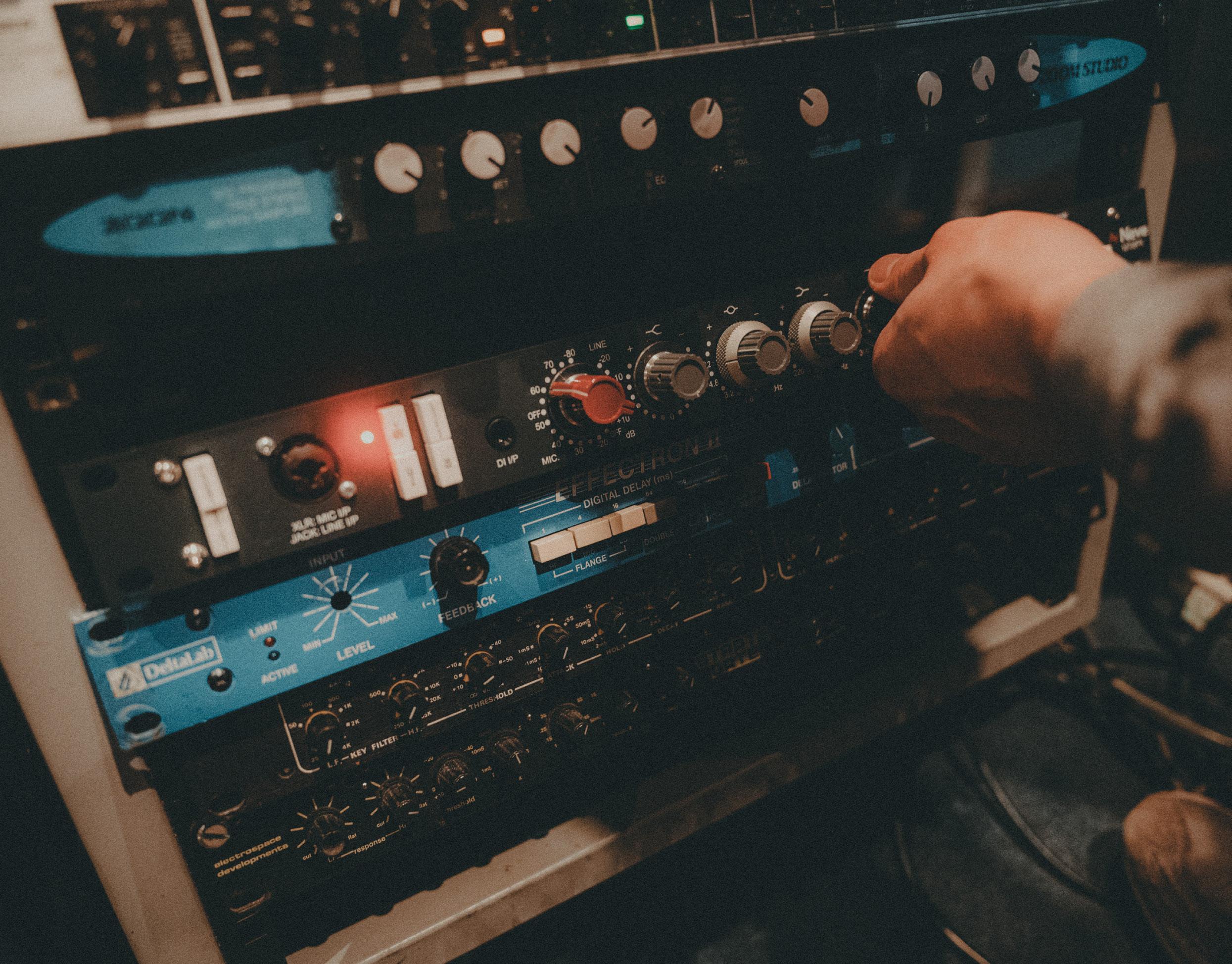
The next generation of Scottish music stars are getting a huge boost after the installation of the first professional preamp at the University of the Highlands and Islands Perth, as Headliner recently discovered…
A Neve 1073SPX has been installed at University of the Highlands and Islands Perth, giving students the most modern recording studio at a Scottish university.
The BA (Hons) Popular Music Degree is Scotland’s first four-year course starting as a Higher National Certificate to support students between school, college and university, with the degree starting in the second year.
Since adding the 1073SPX to the project studio, students can produce sound to industry standard.
UHI Perth Programme Leader in Popular Music, Dr Seán McLaughlin is delighted about the significant role the Neve 1073SPX will play for introducing music students to industry standard operations and sound.
McLaughlin explains how musicians and creative practitioners have adapted their creative workflow to sometimes operate individually when tracking vocals and instruments, and this trend has been picked up by students on the BA (Hons) Popular Music Degree:
“There isn’t a better preamp than the 1073,” he says. “The conversation ends at ‘is there a better one than the 1073?’ No one can really make that claim.
“There isn’t going to be any question over the tonality of the recordings. It can be done with cheaper equipment, but it’s not being done to the same standard. Depending on what
you’re tracking, if you’re recording through the 1073SPX with us, there is no distinction between a studio that maybe costs £1500 per day. Nobody is going to question the quality of that audio recording, that is why it was important for us to put that in there.”
The 1073SPX adopts the Neve Class A design, three-band EQ and high pass filter – making it a top choice for modern studios.
While studios have returned to full operational capacity, the implications of Covid enabled the development
of working collaboratively in different locations. The 1073SPX is used as part of this at UHI Perth to help harness international partnerships, including one with Pop Akademie in Germany. Students can attend the international song writing, band and business camp as part of this partnership, where they are put into bands, write music and perform at the end.
Thanks to the 1073SPX, students can continue to work with band members remotely, and send music across the globe at an excellent quality.
“ONCE YOU HAVE A 1073 IT CHANGES THE WAY YOU HEAR A PREAMP, AND YOU CAN’T EVER UNHEAR THAT.”
McLaughlin says: “I’m a Neve guy at home. I have a 1073 and I know the students are going through the same process that I did. Once you have a 1073 it changes the way you hear a preamp, and you can’t ever unhear that. You just can’t go back.”
Student success stories are already hailing from the studio as some records have played on BBC Radio 1, with others broadcasted across major radio stations in Scotland.
“Students book the studio space to either record their lead vocal or bass
– it’s actually brilliant for bass guitar,” McLaughlin adds. “But all of the lead vocals coming out of our recording studios are all through the 1073SPX which is great.”
Going forward, the university wants to introduce more 1073 units to the studio so students can learn more about stereo tracking and other key skills. The new course is centered on creative practice with support from companies such as Neve and feedback from students.

“We accept the fact that studying music is about making music, not replicating other people’s music forever,” McLaughlin concludes. “If that was the way we treated music and it was just about replication, there would be no new music and that would be really damaging culturally. We’ve overhauled our programme and it is really centered on creative practice.”
AMS-NEVE.COM


Multi-platinum legendary British singer and songwriter Arnold George Dorsey MBE, better known as Engelbert Humperdinck, speaks to Headliner about his new album All About Love – which he released to mark his 87th birthday – and shares his most memorable musical moments from his five decades in the business.
When it comes to describing the career of Leicester-born, now USA-residing Engelbert Humperdinck, ‘a life in music’ is simply an understatement. After starting out as a performer in the late 1950s under the name Gerry Dorsey, he later adopted the name of German composer Engelbert Humperdinck as a stage name, and found success after he partnered with manager Gordon Mills in 1965. His recordings of the ballads Release Me and The Last Waltz both topped the UK Singles Chart in 1967, selling more than a million copies each - a feat not to be sniffed at during the height of popular music’s golden era.
Subsequent hits secured him as one of the best-selling artists of the ‘60s in the UK, while the following decade saw him experience significant North American chart success. Having garnered a reputation as a prolific concert performer, Humperdinck embarked on a musical journey that would see him head out on tour nearly every single year for the rest of his life. Many years later, he would even go on to represent the UK at the 2012 Eurovision Song Contest, which he tells Headliner was “a great honor”.

Humperdinck’s latest record, All About Love , is a collection of his own
versions of some of the greatest love songs of all time. For an artist who has seemingly never stumbled in his songwriting, and who collaborated with some of the biggest names in the music world on his 2021 album
Engelbert Calling – including Neil Sedaka, Dionne Warwick, Gene Simmons of KISS, Willie Nelson, Cliff Richard, and the late Olivia Newton John – recording this latest project was all in a days’ work.
The first single is a cover of Barry White’s 1974 original My First, My Last, My Everything, onto which Humperdinck added his own country spin, and Headliner was curious to find out why this classic was selected to kick off the album.
“It’s one of my favorites,” says Humperdinck, joining Headliner on a Zoom call from L.A. He’s in good spirits, and talking about his craft clearly comes very naturally.
“I spoke to my producer and said I wanted to put a country touch on all the songs. I recorded vocals at Igloo Music in Burbank, and then all the tracks were put down at Blackbird Studios in Nashville with some absolutely fantastic musicians.”
True to his collaborative roots, he also decided to put two exciting duets on the album: Besame Mucho with Lupita Infante, and A Man
Without Love with Angelica Maria. “These two lovely ladies were introduced to me by my producer,” he says. “Angelica Maria is the sweetheart of Mexico, and after I had a hit with A Man Without Love in the early years, she then had a hit with it in Mexico, so the collaboration made a lot of senseshe is wonderful to work with.
“Lupita Infante is another big star over there. Besame Mucho is the greatest love song written in a long time, and I’m going to put that in my show. Both songs have some Spanish in them, so I’ve been learning the language and will be using it to sing the songs a month from now when I head to Chile to do some concerts.”
Despite being a classic singer songwriter at heart, Humperdinck remains very much connected to the music community, and while his age might suggest otherwise, he is certainly not shy of using social media to stay in touch with his army of loyal fans.

Having recently performed the Bee Gees’ timeless love ballad How Can You Mend a Broken Heart on his YouTube Live, Humperdinck’s followers soon requested that he record his own full version. He headed straight to the studio to do just that: “Each week I do Tuesday Music, where I inform my audience about what I’m doing that particular week, and what I’ve got coming up,” he says. “I love keeping in touch with fans around the world; I often read their comments and sometimes pick somebody out to talk to directly on my YouTube, which is really nice.”
One of Humperdinck’s songs which saw a recent revival is I’m Forever Blowing Bubbles , which football fans will recognize as the adopted chant of East London football club, West Ham F.C. The song features in the latest Brad Pitt film, Bullet Train , yet it’s not the only medium where his music has appeared recently. Superhero TV series The Umbrella Academy featured his 1968 track Quando, Quando, Quando , while popular Disney+ series Moon Knigh t brought A Man Without Love to a modern audience.
“Since A Man Without Love in Moon Knight especially, I have had a lot of young faces show up at my shows; I guess a lot of them wanted to know what an Engelbert Humperdinck looks like,” he chuckles. “It’s wonderful to see them in the audience, and I’m very lucky that I’ve got an across the board age group that comes to my shows.”
Incredibly, the two years during the pandemic were the only years of his career that he did not head out on tour - that’s every year since 1967. He really does live for the music, and continues to do so in his late 80s, enjoying performing just as much as he did 50 years ago.
“You’ve got to keep creating new material for your market, and keep the fans interested,” he remarks with authority. “Although when I do the classics at my shows,
I see people going crazy and singing along with me, which really makes the show run wonderfully.”
Proud career moments for an artist of such caliber are in abundance, no less: “I’ve got a star on the Walk of Fame right outside the Roosevelt Hotel in L.A, as well as one on the Walk of Fame in Leicester, my hometown. Those are the sort of things I treasure,” he says. “And of course, it was wonderful for the late Queen to award me the MBE.”
And his biggest ever audience? A quarter of a million people in New Zealand, where a song that he recorded at the very beginning of his career, Ten Guitars , has almost become the country’s national song: “Everybody from the three year olds to the 80 year olds sing that song to this very day, and I recorded it 56 years ago!” he says, almost still in disbelief.
When he’s back from his current tour, Humperdinck will without a doubt be back in the studio recording and working with other artists, and it’s not unfair to say that as one of the most successful, enduring artists of the last 60 years, it really is all he knows.
“I’ve been very fortunate, because people tell me I don’t look my age,” he sums up with a wry smile. “I feel as though I’m still in my 50s, so when I’m on stage, I’m still dancing around and doing all that stuff. Usually as you get older, your vibrato gets slower. Mine has almost disappeared, and it’s become more of a commercial sound in today’s market, so I think I’ve been very lucky in that respect. I just want to keep doing what I love to do, for as long as I can.”
ENGELBERT.COM
“I JUST WANT TO KEEP DOING WHAT I LOVE TO DO, FOR AS LONG AS I CAN.”
“I’m constantly moving between my personal mix room and various studios and spaces, which means the need to have absolutely pristine quality on-hand all the time is really important. With the Merging Technologies Anubis I have a pair of really powerful mic preamps, brilliant A/D and D/A converters and a perfect monitor controller all in one box. I finally have a centerpiece that I trust completely for both recording and mixing.”
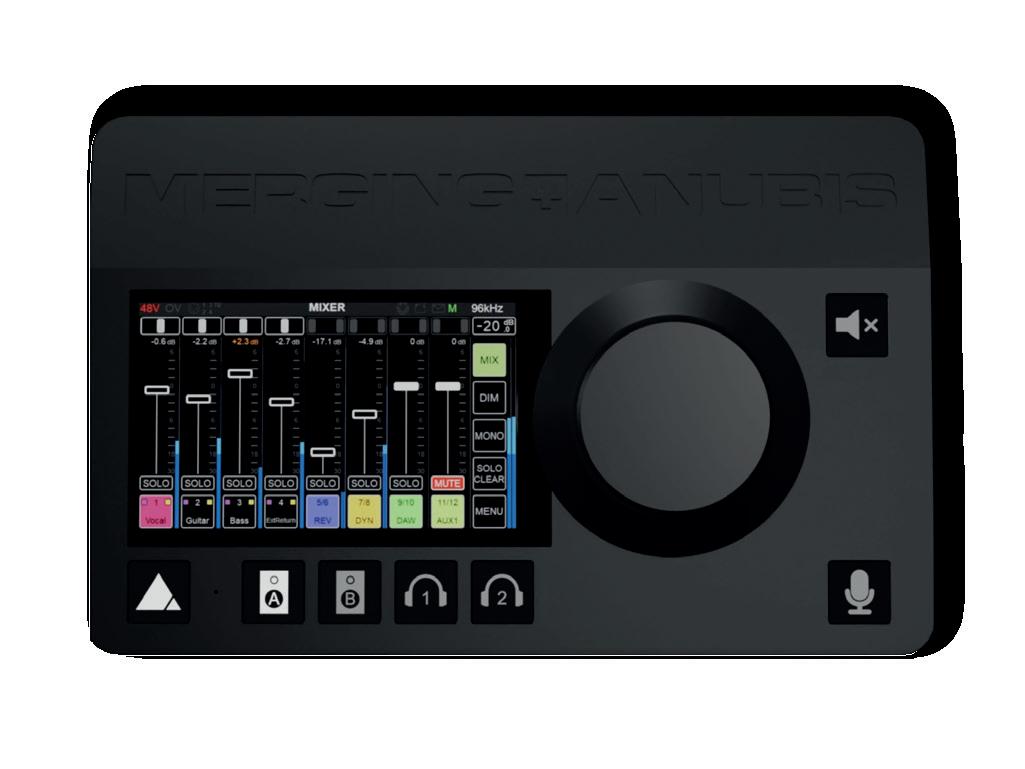

merging.com/anubis
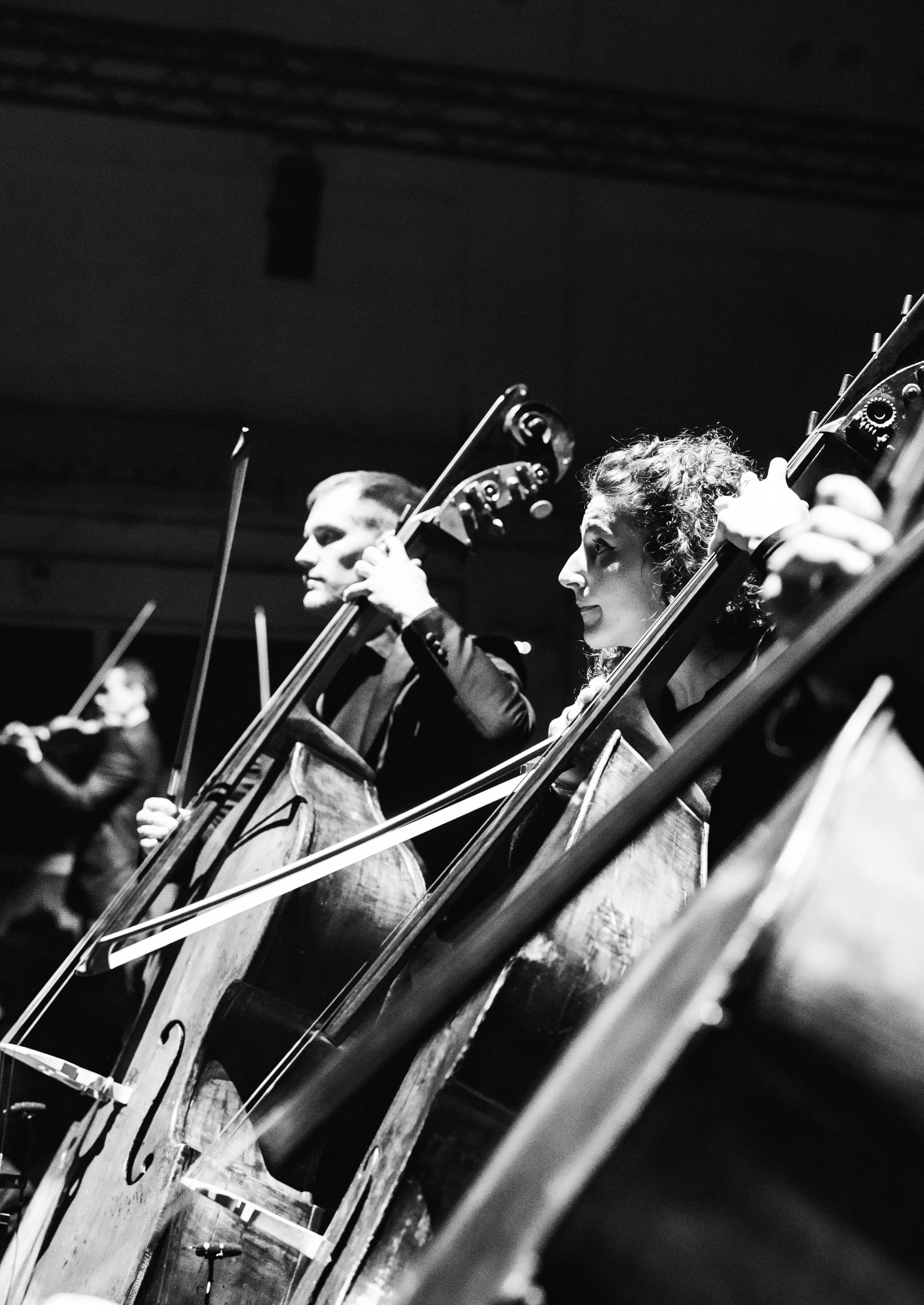
Words bY COLBY RAM S YE
Following sold-out debut performances in 2021, the Aurora Orchestra returned to London’s Printworks during the venue’s final run of shows earlier this year, combining the potential of an orchestra playing from memory with the vast scale of the iconic Press Halls to give a uniquely immersive experience of Beethoven’s mighty Fifth Symphony. Headliner was fortunate enough to attend one of the events, which featured immersive acoustic shell audio reinforcement provided by d&b audiotechnik and Southby Productions, and offered a completely fresh and revelatory take on classical music.
The aim of the Aurora Orchestra, artist and composer Nwando Ebizie, and Southbank Centre, who teamed up with Printworks to bring the performance to fruition, was to explode the orchestra across the space, enabling listeners to experience the music from inside, and get up close to instrumentalists as they perform in ways that would be impossible in a concert hall.
As Headliner enters the famous press halls, soothing purplish white lights fill the space as a lingering mist drifts slowly up towards the room’s lofty industrial metal ceiling. A droning electronic soundscape is playing, giving the feeling of an ominous otherworldly presence, interspersed with giant, distant booms like the footsteps of a dinosaur in the next room. As Headliner moves around the space, the sinister tones ebb and flow with lush, somber chords, eventually building to a dramatic crescendo of shrill, alarming tones.
All the while, people are milling around the floor in small groups, either drinking or conversing about the spectacle to come. A number of elevated platforms are dotted around the room in formation – some already adorned with big band instruments – and as the anticipation in the room builds, the section members meander their way through the crowd towards each platform.
After a few seconds wait with bated breath, Beethoven’s Fifth bursts into life; the familiar opening chords of ‘dun dun dun dun’ sends shivers down the spine as spotlights illuminate each section of the orchestra in sync with the music. The sound feels enveloping, almost overwhelming at times, but textures of each instrument audibly blend as one melody flows seamlessly to the next. The instruments are powerful and consistent across the space, the strings full and luscious, and the horns huge and imposing. It was incredibly impressive to hear each
individual instrument’s placement in the soundscape, while simultaneously being able to appreciate the dramatic, ear-pleasing music filling the room.
Technical director at Southby Productions, Digby Shaw, sound designer David Sheppard and Aurora Orchestra chief executive John Harte were waiting in the wings to answer any questions Headliner had about the d&b audiotechnik Soundscape system. The idea of splitting an orchestra apart and raising them on platforms so the audience could be in and amongst them had meant a system was needed to make everything audible for not only the listeners, but the musicians, given they could no longer hear each other clearly from so far away. d&b’s Adam Hockley worked with Southby to utilize the Soundscape system as an acoustic shell for the performance space.
“The aim was to feed each instrument, close mic’d, into En Space, Soundscape’s convolution reverb processor, which returned the sound with the reflections and reverberations of a real concert hall,” Sheppard tells Headliner “Soundscape allows you to feed sections of the orchestra into left, center and right locations of an early reflection plane which makes positioning and
response very believable. The result was a great success.
“When the orchestra played here two years ago, everything had worked but it was felt the instruments still felt a little isolated in the vast space. This time around it was decided that we wanted to achieve a more direct sound - more of a sense of energy and connection to the music.”

To make it work, Sheppard approached the mix similarly to how he would a stereo show, achieving a musically balanced mix that he could monitor on headphones, but bussed to left, center, right.
“These were then sent direct via a Matrix to the En Space engine reflection zones,” he elaborates. “I could then alter the overall level via the LCR faders, and I sub-grouped the orchestral sections, so a re-balance could happen whilst listening in the room if necessary. I then introduced the same L, C, R mix to three En Scene sound objects - three zones of direct to PA, not via reverb - placed over the orchestra. These were then slowly introduced into the mix adding amplification. As everything was closely mic’d we had plenty

of headroom before feedback; the combination of the acoustic shell and the reinforcement brought a real intensity to the experience, and it was extremely exciting to be in the center of.”
Sheppard is a fan of using Soundscape to create immersive events, and says that object-based mixing feels very intuitive, adding that “using a 360 speaker system brings freedom to mixing, making it musical and performative. Soundscape has a resolution and depth that makes this truly achievable.
“The unique space of Printworks and its surprisingly clear sound and short reverb time meant that the system Southby installed was perfectly suited to playing with an acoustic response for the musicians. I felt I was able to focus acutely on their needs, rather than feel like I was fighting against a room.”
One of Aurora’s key aims is to bring orchestral music to a wider audience, in less conventional spaces. While the orchestra’s chief executive John Harte initially thought the space might be very boomy acoustically, he was pleasantly surprised by the reality. Because of its history as a
printing factory, and the level of sound insulation that necessitated, it actually turned out to be more like a recording studio, with almost no natural reverb.
“This made it a good blank canvas into which to install a Soundscape system to give us a suitable artificial acoustic for performing,” explains Harte. “The key goals were twofold. Firstly, we wanted simply to introduce as many new listeners to orchestral music as possible. In this respect the project was an unqualified success: across the two performances we welcomed over 3,600 people, the vast majority of whom were new to classical music and under the age of 40. This contrasts very sharply with the kind of demographic which is typical for orchestral concerts in the UK, which tends to be an older audience comprising many returning bookers.
“A second goal was to give a radically different immersive experience of an orchestral symphony, conveying some of the thrill that musicians feel when they play as part of an orchestra. Most people never get the chance to experience what it is like to hear an orchestra from inside – we wanted to offer that really visceral experience of being completely
surrounded by sound; of being close enough to players to watch their astounding fingerwork and smell the rosin on bows.”
Harte was equally impressed by the d&b Soundscape system itself, and agrees that it lends itself well to orchestral performances such as this.
“There’s no question that this kind of immersive performance format involves some big compromises with sound,” he concludes. “There’s a reason that orchestras have played on stages in concert halls for hundreds of years – if you explode the setup over a width of 70 meters and bring the audience physically inside the orchestra, it’s much, much harder to achieve a perfect ensemble!
“We always knew that there would be musical compromises in the pursuit of the audience and experience we were aiming for. Soundscape allowed us to keep those compromises to a manageable minimum, and there’s no way that this project would have been possible without this kind of spatial system.”
“USING A 360 SPEAKER SYSTEM BRINGS FREEDOM TO MIXING, MAKING IT MUSICAL AND PERFORMATIVE.”






Donning a horned Sardinian mask when he created his on-stage persona for his side-step into neoclassical piano music, Hamburgborn pianist and composer Lambert was once a gigging jazz musician, but was kicked out of his jazz band while trying to infiltrate the Berlin jazz scene. But now, after feeling ostracized by the jazz community, he finally feels ready to return to the genre he loves so much, 12 albums later. He speaks to Headliner about his pre-Lambert jazz beginnings, and coming full-circle with his stunning new record All This Time.
Headliner mentions to Lambert that, seeing him live for the first time way back in 2015 (at Servant Jazz Quarters, no less), it was obvious he felt most comfortable bringing jazz
to the table when playing live, as he would add extended improvisation moments to his set, and often would close his set with a moment of avantgarde madness as he and his band would just completely let rip on their instruments.
“Yeah, it’s true,” Lambert says, speaking from his home in Berlin. “Some people would say that and could hear it in my music, but also a lot of people wouldn’t!” he laughs. “But when I started being Lambert and was placed in this neoclassical world, it would only be occasional people that would pick up on the bits of jazz in my live shows.”
After studying in Amsterdam, Lambert relocated to Berlin to try and make it in the local jazz scene, and his
experience would be enough to make anyone do an artistic one-eighty from jazz to the ambient world coming into vogue thanks to the music of Nils Frahm and Ólafur Arnalds.
“I moved to Berlin when I finished studying in Amsterdam,” he says. “I tried to connect with the jazz scene here. It was really cheap in Berlin at that time, I could live in a shared house just for 150 euros, and get by just doing local jazz shows. But it didn’t really happen for me, I didn’t end up as the guy people would call all the time. I was kicked out of a fairly promising jazz band — it was after a show where I arrived first and set up my Fender Rhodes piano in the middle of the stage.
“I thought it was a great show and afterwards people were approaching me and asking what the name of my band was, but it was the drummer’s band! He noticed I was getting a lot of credit for it, and then he called me the next day to say, ‘I talked to the other guys and we don’t think you’re the right fit, we don’t like the way you improvise.’ Maybe they would tell an entirely different story. Even though I didn’t really like the band, it was a horrible feeling, not being wanted. That was my last show in the Berlin jazz scene, and I slowly started becoming Lambert after that.”
In previous interviews with Headliner, Lambert has talked about how the musical persona we know now was something of an accident. One morning he was jamming out his piano compositions that he had no intention of releasing, which awoke a hungover friend, who said they loved the music so much that they didn’t mind being woken up by it, and that he should release it. He happened to know Nils Frahm already from his days in Hamburg, but had to Google
him to realize how successful he had become and the growing demand for instrumental piano music.
His mask, on the other hand, is a means to an end of making him feel more comfortable when performing and bearing his soul with such personal, raw and intimate music. He traveled to a tiny Sardinian town, where the mask style originates, to meet a gentleman who would create the Lambert mask for him, full of detail and symbolism. With that said, he hadn’t spoken about how all this relates to his jazz rejection incident, which very likely also contributed to his wishing to hide his face on stage.
“When this happened, I wanted to hide my past as a jazz musician. I didn’t want to be associated with it. With the first Lambert record, I wanted to completely get away from that scene and find a new identity. Later on, I realized that’s a bit stupid and you do hear a little bit more jazz on the albums that came after.”
The lead single to mark Lambert taking a big step out of the jazz
closet was a track not composed by himself, but the jazz standard Cry Me A River. His label, Mercury KX, the more modern-leaning arm of Decca Classics and owned by Universal Music, felt going with an already famous song from the jazz world would be best for marketing purposes. “I didn’t mind,” Lambert says. “I thought, ‘You do what you do best, and I’ll do what I do!’”
On his choice to cover the song, written by Arthur Hamilton and made famous by Julie London and subsequently Ella Fitzgerald, Lambert says, “I just really love the song. It always comes up for me when I’m walking in the street and I start singing the lyrics. When I heard the Brad Mehldau version, I just started crying. But it almost doesn’t matter who’s playing it, it has such a strong melody and such great harmonies.”

Time and time again, artists have audaciously released albums that mark a big shift in sound, even swapping genres entirely, only for the gamble to fall flat on its face. This is absolutely not the case with All This Time, which can stand proudly amongst Lambert’s prolific discography, even though it isn’t purely characterized by the whimsical Chopin-esque piano impressionism that we’ve come to know Lambert for. That said, a lot of the piano lead melodies that rise out of the double bass, drums and synths have that playful and loveable Lambert signature, so this is by no means a total departure.
Pants, as the name might suggest, contains all the impressionist melodies that started on the debut album Lambert. Opener Bummel is very much one of the jazziest numbers on show here, but the instrumentation nonetheless is a lovely reminder of another more avant-garde Lambert track, Vienna from 2019’s True. Another stunning highlight on this Lambert LP is Loud, with a dizzyingly fast BPM, manic percussion and synths, and an improvised bridge section, all somehow marrying with delicious melodies. “When I was in high school, I used to dream about being a producer for rap acts,” he says.
“I guess I was coming back to this dream a little when I created this kind of production. For most of the album I would write a beat for my drummer to play, but on Follow and Loud I was following my dream to be a rap producer one day.”
Lambert is beginning rehearsals for his 2023 tour, with Germany and the Netherlands announced so far — will these shows be a radical departure from previous ones to accommodate the new album?
“People who’ve seen me before shouldn’t notice that big of a difference,” he says. “I’ve been playing as a trio for a long time now, and we will include the hits from the past. And like you said, improvisation was always a part of the set. I don’t think anyone will be disappointed, I’ll mostly be doing what I’ve always done.”
One question that remains is the issue of how Lambert’s imposing mask fits into all this — does the change in sound somehow change its role, perhaps? His 2021 album False does show him removing the mask that seems integral to the overall Lambert experience, albeit his face is blurred on the cover image.
He reveals it’s something he’s given thought to: “I sometimes do feel like removing it during a concert. I also wonder if maybe I would have to take it off during some of the more heavy improvisation parts of the concert — we’ll find this out during rehearsals. But the mask is such a great tool to help me feel free on stage, like I can be whoever I want and do whatever I want musically. And it really helps with my stage fright, which is just horrible. I can’t imagine ever entering the stage without it! But it might be that it becomes less important during the concerts. I’m not sure yet.”

As Lambert’s career continues to develop in such a fascinating way, it seems he will always be a beloved character, whether he releases playlist-friendly neoclassical music, or the avant-garde leanings of False, or this new jazz album that is not only out on his usual label, Mercury KX, but also co-released by legendary jazz label Verve.
This places Lambert in the company of Count Basie, Ella Fitzgerald, Dizzy Gillespie, and many more legends. Cheers to that.

Introducing MAUI® G3 – Designed & engineered in Germany, this game-changing column PA system boasts a seamless design, powerful subwoofer & larger mid speakers for an unprecedented full-range experience. Ideal for mobile DJs, event technicians and musicians, it delivers bone-shaking bass down to 37 Hz, pow erful mids and crystal-clear highs. Get the ultimate headache-free column PA system with impressive sound pressure, cardioid column as well as a wide and far-reaching sound dispersion. Compact, portable, and perfect for any venue. Take your performance to the next level with MAUI® G3!

 Words
Words
by Adisa B a okojn
The journey from neophyte to having impact in the world of music is rarely a straight line. Greatness emerges at different times in unlikely places from seemingly unlikely people. For Coe, who partnered with Carl Cox on the Awesome Soundwave label, it began in Ireland. “I started recording music when I was in my teens in Ireland,” he says. “I learned to play the guitar when I was 10 or so, and then I decided that I would forego my formal schooling in order to become a super rock star, which I totally believed was truly possible.”

Coe morphed from fan into a fledgling producer as a pre-teen.

“At the age of 12 or 13, I naively proceeded to start finding tape machines and playing music,” he elaborates. “I started recording music when I was in my teens. I found a love for the idea of being able to layer sounds and create a whole other different vibe with recordings.”
In his youth, he was mesmerized by the quality of sound from bands like Pink Floyd. “The Dark Side of the Moon, for me, was the greatest work of art ever created,” he states matter of factly. “A friend of mine down the country had a Tascam 16-track when it first came out, I think in around 1985. I was going to make another Dark Side of the Moon. Of course, it came out sounding like crap, but at least I was doing it!” he says chuckling. It was that kind of drive that kept him creative and in the game on his own journey.
In those days, high quality equipment was hard to come by, he remembers. “When you’re limited to one synthesizer or one instrument, you have to find a way of creating meaning by pushing through that limitation. Some people might disagree, but I do think that limitation is very much the mother of invention.”
Under the open canopy of personal creativity, Coe feels that very little can hold an artist back. “My limitation is time and imagination,” he admits. “I learned through trial and error, and having limitations and wanting to push beyond that and trying to get to that Pink Floyd moment. And then I’m also limited by my knowledge; I’m constantly trying to work around that to find a way to express something – I still find that to be very much the motivation for me.”
Then in 2017 a journey into nature led to an amazing musical experience. “I came back here to Ireland to create an album, which is called Mountains of Silence, based on the landscape of this part of the world.
“I wanted to make a deep, rumbling techno album,” he says. “Because to me, that’s what the mountains would sound like. I was very limited in terms of how I did it. I purposefully limited myself to just working in a small room in a stone cottage, climbing the
mountains every day and coming back with small recordings of the atmosphere and trying to turn them into gargantuan techno tunes.” For Coe, the exploration within the frigid mountains triggered musical expansion back in the studio.
Thinking back, he says, “I feel like in a couple of the tunes, I succeeded, but it was really a big struggle for me, because there was a lot of stuff that I still needed to learn about how to make that style of music.” He stuck to his vision and the results were more than just a new album.
“That album became the catalyst for Carl Cox and I starting our label, Awesome Soundwave together,” he reveals. “I went back to Australia after six months of making the record in Ireland. I was having lunch with him and telling him about the project I’d just done. I said, ‘Look, I know it’s not for your label, but I want to release it,’ and he said, ‘well we’ll just have to start a new label together!’ Within half an hour of discussing it, it was happening, and suddenly there was a whole platform that I could release this work of art on, thanks to Carl.”
When Coe is in the zone in the studio he chooses the Augspurger DUO 8 monitors: “I heard about them first through a friend of mine, Robbie Dunn, who works with Dave
Malekpour as a distributor for Augspurger in Europe,” he says. “At that same lunch that I mentioned, where Carl was talking about starting the label, he actually asked me to come down and look at a property of his and asked me if I would help him build a studio, which we did.
“I knew that Carl needed monitors that had the power to push decibels with a club feel, but still have clarity. Robbie told me it’s really the only system we should be using, citing a bunch of different people who use them from Snoop Dogg to Wiz Khalifa. I went to a studio in London and they had a set of the DUO 8s there. I listened to them and knew they were the ones straight away.”
The quality of the sounds from the DUO 8s became the cornerstone of their new studio, says Coe: “We built the new room around the Augspurgers. We ‘pretend’ soffit mounted them so that they were basically flush against the wall. Once Dave had come in and tuned the speakers to the room, I played them to Carl, and he was just blown away by what he heard.
The Augspurgers are the workhorses of the studio every day; they’re the ones we listen to, they’re the ones we mix on, they’re the ones we record with,” he continues. “Their sound
“WHEN I PLAYED THE AUGSPURGERS TO CARL [COX], HE WAS JUST BLOWN AWAY BY WHAT HE HEARD.”
and range is unmatched. With the Augspurgers, I find that I can get great clarity when I’m listening at a lower level, and this is consistent as you push the level up in terms of clarity and the frequency range.”
Coe tells Headliner that DUO 8s are important across all genres of music: “No matter what music you’re doing, you need to have a flatness and consistency across the frequency spectrum,” he says reflectively.
“I’m also very excited about the label, Awesome Soundwave, because we have so many amazing artists that we’re releasing this year. We’re putting something out every two weeks for the entire year because we’ve got so much amazing material.
“Right now, the Awesome Soundwave label is focused on the live experience. Carl has just released an album of his own called Electronic Generations, which was

recorded entirely in the studio on those Augspurgers. I’m also working on a whole bunch of new material myself, so it’s all ongoing. I think the live scene is the most exciting at the moment, and that’s because it’s very raw and new. The audience feels the difference in energy.”
AUGSPURGER.COM AWESOMESOUNDWAVE.COM

L-Acoustics has announced the launch of L-ISA 3.0, the latest and most comprehensive version of its immersive audio software platform for live sound and music creation…
The L-ISA 3.0 mixing software has been upgraded to make immersive audio more accessible, delivering powerful tools that make it easier to create and automate compelling spatial audio content, live or in the studio.
L-ISA’s FX Engine allows sound designers to create reactive movements and trajectories of any kind: reactive to the designer and reactive to other objects within L-ISA to create true organic movements. These fully customizable controls and behaviors can be additively applied to unlimited objects.
The new Stereo Mapper feature in L-ISA 3.0 maps existing stereo content to an immersive speaker configuration, without changing the original artist’s mix. This allows L-ISA venues to welcome artists who prefer to perform in stereo without the need to change their L-ISA configuration.
Stereo Mapper distributes stereo content to an L-ISA configuration while conserving a similar power distribution as traditional left/right array configurations to retain the original stereo image and overall mix. Low-frequency coverage is also increased throughout the venue — reducing or even improving the stereo image while maintaining or improving low-frequency directivity. Any out-fill speakers can be time aligned to either stereo or immersive, making switching between stereo and spatial content seamless or achievable on the fly.
An entirely updated Snapshot Engine provides increased granularity and scope of what can be stored in snapshots, allowing users to choose
which sources are visible at any given moment in time, with features such as source processing, delay, reverb, and more.
Meanwhile, a new Edit Mode allows users to visualize the position of audio sources in each snapshot, making it easier to follow an object’s position across the soundscape at a specific moment in time. The brandnew Preview Mode, available for both online and offline use, makes it possible to visualize the position of specific objects in different snapshots or an object’s position throughout every snapshot. If changes are needed, users can make on-the-fly
adjustments in Preview Mode without any interruption or downtime.
L-Acoustics has also expanded the L-ISA ecosystem, making it possible to install qualified third-party applications and technologies on the L-ISA Processor II. The first application to natively leverage L-ISA is Mixhalo, an ultra-low latency networking technology that unlocks high-fidelity, augmented audio for fans at live events, which is now fully integrated into the L-ISA 3.0 platform.
Mixhalo offers audiences multichannel audio streaming via their own phones and headphones. Fans can
“HAVING THE ABILITY TO CREATE AND PERFORM IN IMMERSIVE IS NOW A NECESSITY AND ACCESIBLE TO ALL.”
hear the full band mix with studioquality sound at a concert or focus on a guitar mix or drum solo, or they could tap into a binaural mix powered by the L-ISA Processor.
Coupling Mixhalo with the L-ISA Processor II allows show designers to natively control Mixhaloaugmented audio content directly from the processor and stream directly to mobile phones.
“As consumer audio platforms such as Apple Music, Tidal, and Amazon Music continue to make spatial
audio more ubiquitous, having the ability to create and perform in immersive is now a necessity and accessible to all — regardless of skill level or format,” says Scott Sugden, Director of Product Management, Software and Electronics, L-Acoustics. “The new L-ISA 3.0 platform brings more value to our immersive technology platform for those who’ve chosen to use it in their venues and for those who choose to create their content with it.”

Additionally, the L-ISA Studio desktop processor has gone from 12 outputs to 16, giving on-the-go sound designers more options for their immersive sound content.
L-ISA 3.0 functionalities are available now; visit L-Acoustics.com to download L-ISA Studio for free.
Experience the feeling of instant connection — with your music, your craft, your audience. Designed for musicians, audio professionals, and filmmakers, the Evolution Wireless Digital family includes three microphone systems that simplify setup, guarantee the most reliable UHF connection, and deliver superior sound quality. Evolution Wireless Digital is a powerful tool for those who put quality and performance above all else.
sennheiser.com/evolution-wireless-digital
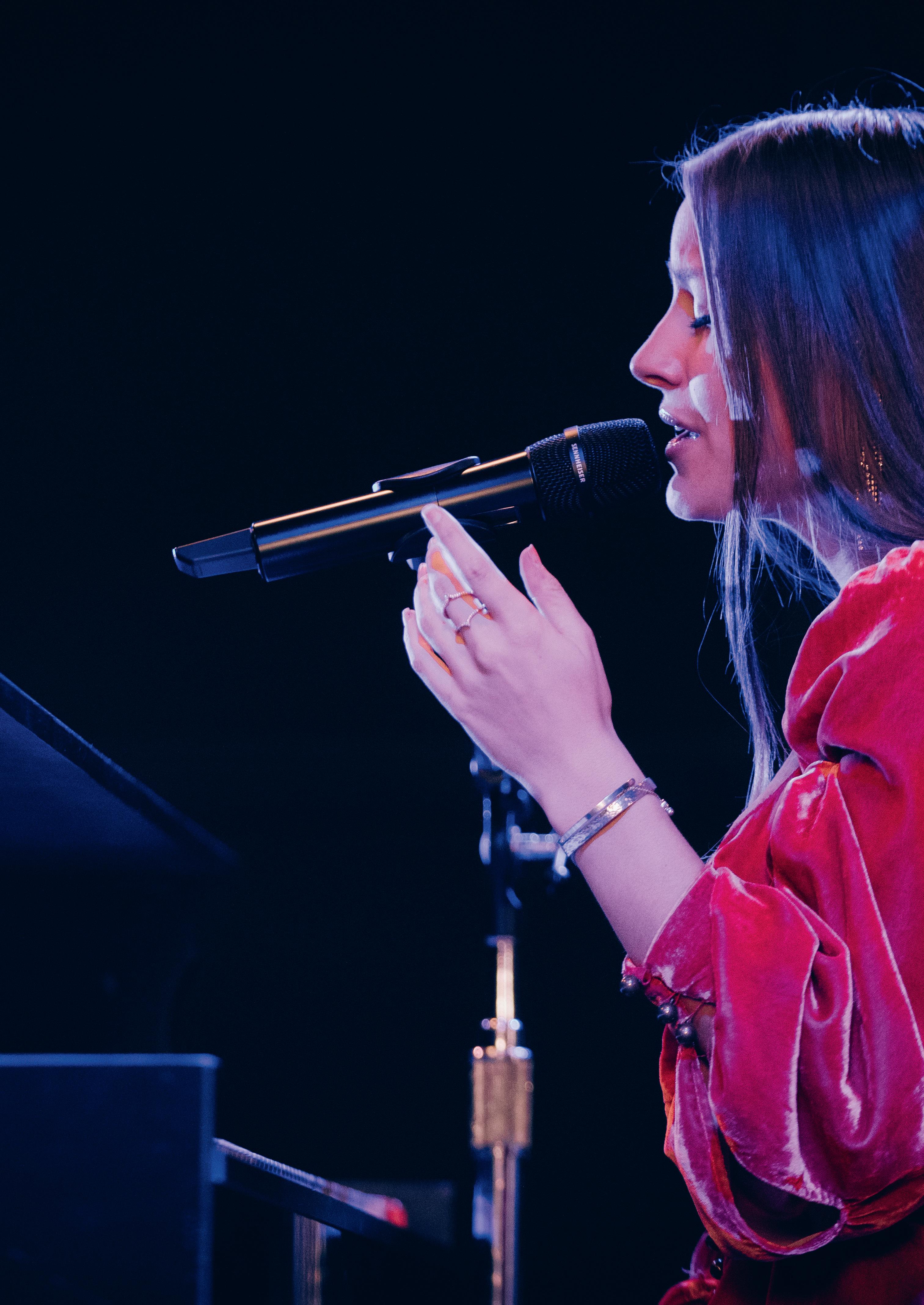
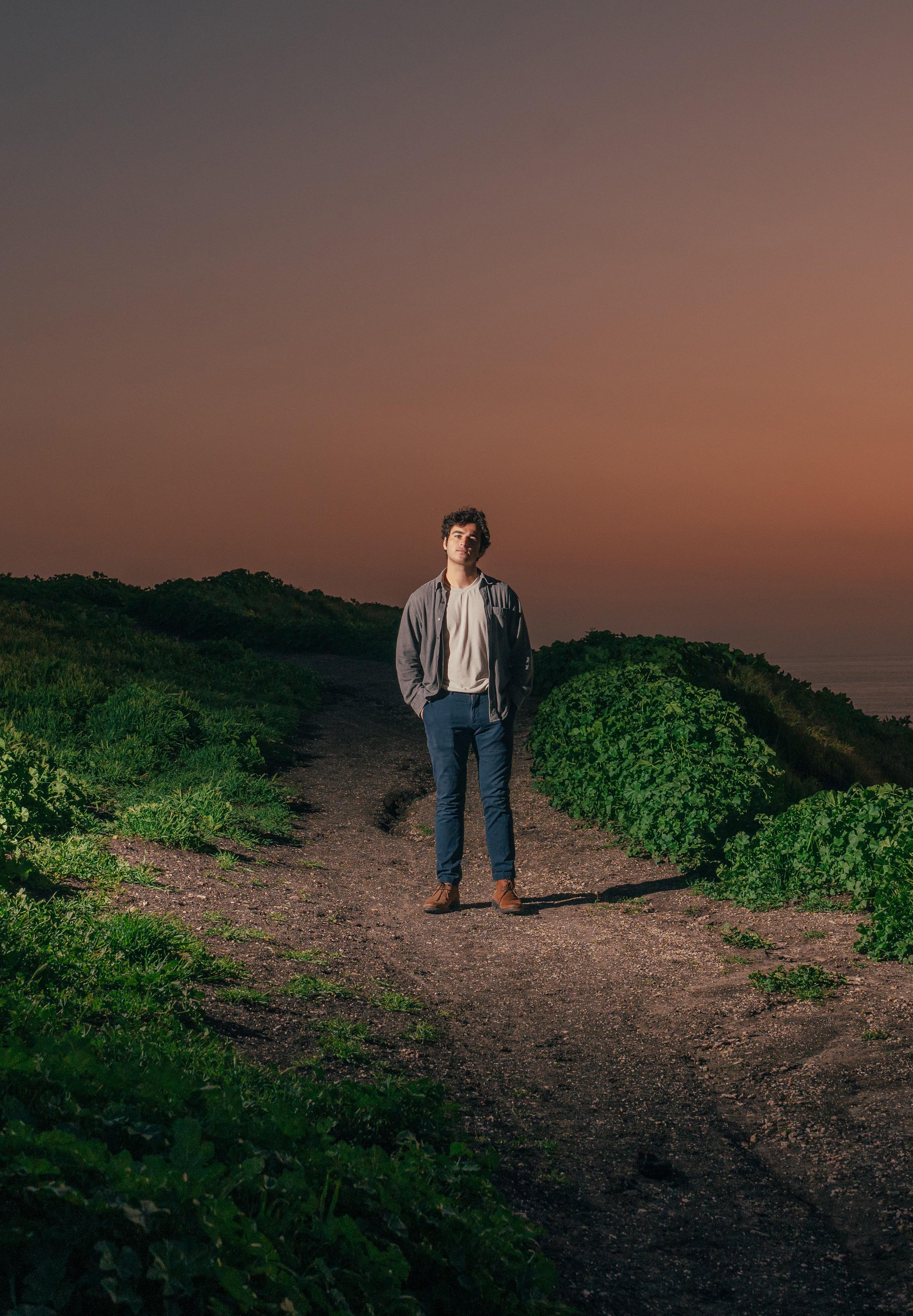
.
New Jersey-born, L.A.-based MacPherson is about to embark on his first-ever headline tour across North America, and he’s nervous. “Yep. It’s my first ever headline tour,” he says from his hometown of New Jersey the week before he hits the road. “It’s exciting and terrifying – mostly great things,” he laughs.
The tour is in support of his sophomore EP and major label debut Powerlines. Co-produced by MacPherson, Adam Yaron, Tommy English, Jeremy Hatcher and Gabe Simon, the EP’s theme is about longing for love and connection, and combines lush soundscapes and powerful, vivid lyricism that he hopes will have listeners hanging on to every word. The title is also meant to be taken literally – a nod to how power lines are able to keep us in touch with the people we love.
“Powerlines is about feeling unavoidably connected to experiences
I’ve had, people I’ve met and people I’ve come to understand, or am still trying to understand,” he shares. “It’s about growing up and feeling tethered to those moments and those memories. Also, a little bit of the EP tips a cap to the future and where I am now. So hopefully it’s a documentation of some type of radius that I’ve created in front of me and behind me of what’s going on in my life – what has recently happened, and hopefully what the future looks like. It’s very much an invitation into how I feel at the moment.”
Hailing from Red Bank, MacPherson absorbed the no-nonsense New Jersey spirit from his surroundings, while his songwriter father gave him a love for music. He spun records by the likes of The Beatles, Paul Simon and Rolling Stones, while his mother introduced him to Motown icons like Sam Cooke and Stevie Wonder. Of course, the spirit of Jersey’s own
Bruce Springsteen crept into his subconscious as well, and later in life he found a kindred songwriting and production spirit in Frank Ocean.
“I grew up 20 minutes from Asbury Park where Bruce is king,” he smiles. “Overall, I’m definitely inspired by Jersey. There’s a certain grittiness to it. Everyone is always on the go –whether it’s 11am or 1am. I’ve taken this attitude and tried to apply it to everything in my life. The people back home are great, despite what New Yorkers will tell you,” he laughs.
While attending university, he discovered his own path as an artist while training as a division 1 football player. Could things have been very different for him had he chosen athletics over music?
“I didn’t really do the music thing until later in life,” he acknowledges. “I definitely didn’t have to choose between the two though, I just happened to choose music over everything else. I was playing soccer and I was a nursing student at the time – I was devoting a lot of energy to those things, and also a lot of energy to music and songwriting. I decided to throw all of my eggs in one basket and put all that attention that I was subdividing into soccer and nursing into music, because I was really inspired and fired up to see where I could go with it.”
His gamble paid off. Upon graduating from Sacred Heart University, he continued to release songs as an independent artist. Picking up and leaving the East Coast, he settled in L.A. in 2020 and gained traction with his single Routine in 2021. It blew up, generating over 6M streams. The Songs for Sam EP followed, led by Last Minute which lit up TikTok and surpassed 10M streams. He carried this momentum into 2022 with Crash Course and Rookie, simultaneously emerging as a sought-after collaborator behindthe-scenes for notable musicians

on the rise, including RIAA Platinum certified artist Stephen Sanchez.
“It was the first time that people were making videos to my music,” he says of his tracks going viral, “which is a whole ‘nother strange thing because people are soundtracking their videos and their moments in their actual real life with music you make.”
At the moment, his favorite song off the new EP is the song Powerlines “Just because I’m really proud of it,” he points out. “I love the story and I think it’ll be fun to play live. Objectively speaking, we’re all connected by power lines. However, it’s not the only reason you’re connected to another person, a large group of people, or humanity itself,” he considers. “As you get older, you realize we’re more alike than different because we’re connected by things like falling in love.”
When it comes to songwriting, MacPherson will delve into the quietest moments of a tense goodbye or a doomed relationship.
“I write from inside of the moment,” he observes. “I put myself back into
those memories and think about what I was feeling. I try to bend and push the form of pop music as far as I can with visceral and visual storytelling. I want you to feel like you’re inside of my songs with me.
“Right now, I am looking to cover new ground in terms of my understanding of myself or of the world. I’m looking for any type of depth that I can find in a song or in an experience and following it to see where it goes, although it’s a bit exhausting being open sometimes,” he says, adding that songwriting inspiration can strike at any time for him:
“Probably some of the most potent inspiration and moments of enlightenment is when it’s probably not okay to take your phone out and write down what you’re thinking about,” he laughs. “But that seems to just be how it goes. Whenever I think about songwriting, and if I sit down and say that I really want to write a song today, my brain is generally an empty pit of nothingness. That’s just kind of how it works,” he shrugs.
“IF I SIT DOWN AND SAY THAT I REALLY WANT TO WRITE A SONG TODAY, MY BRAIN IS GENERALLY AN EMPTY PIT OF NOTHINGNESS!”
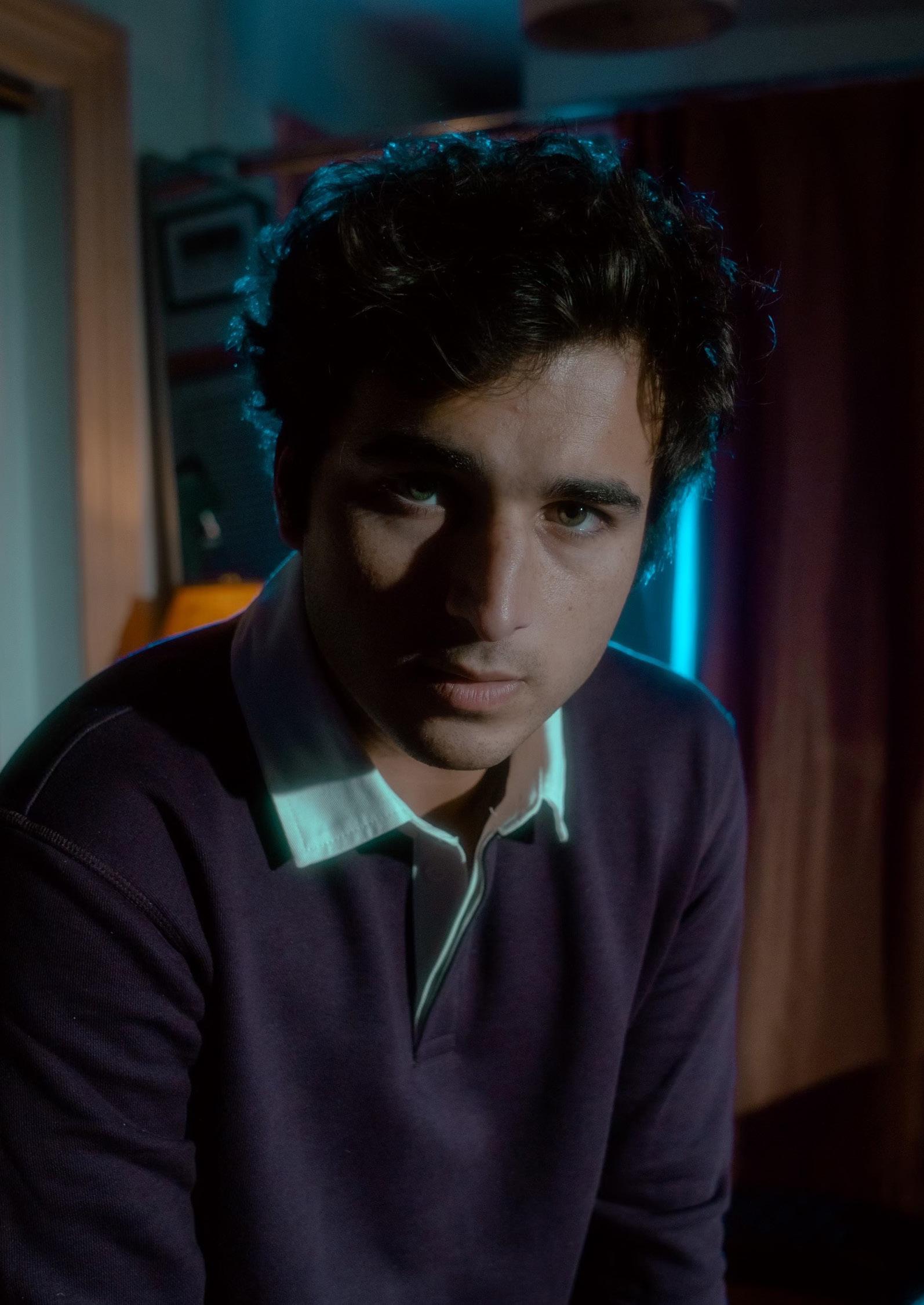
Inspired by Frank Ocean, he taught himself how to play guitar, produce, write songs and record on his own. “My journey with that is slow going, but I’ve learned a lot by trial and error,” he says, sharing that he produces most of his demos from his home studio, taking on co-producing duties for some of his recent tracks. “In terms of this EP, I really enjoyed putting the sonics of a lot of them in other people’s hands and letting them elevate songs that I thought were good.”
After eyeing Powerlines’ co-producer Yaron’s studio monitors for a while, MacPherson recently started using JBL 305P MkII powered studio monitors in his home studio setup.
“What’s funny about those is I was thinking about getting them because Adam, who made pretty much this entire EP with me, made most of the songs on those speakers and I’ve always thought they sounded great. I love how they sound. They’re super balanced and super bright. People will be hesitant, myself included, to get new speakers because they’ve already got used to what theirs sound like, which can be a big part of sound design and how your mix sounds, but because I’m so familiar with Adam’s JBL speakers and because we’ve made countless amounts of songs on them, it was a relatively easy transition.
“They’re great studio monitors,” he adds, “and I’m excited to keep using them now that I have them; they’re definitely going to be my go-to! With speakers, it’s all about sound fidelity and actually hearing what is happening in your song. That’s really important in terms of arranging, getting a texture of a song or getting a mix,
so you just want speakers that you can trust, and I happen to trust those speakers. A lot of people that produce themselves and work on stuff at home could definitely turn to them as a reliable at-home studio monitor.”
The Powerlines tour wrapped at the end of May with a special show the Troubadour, immediately followed by hitting the road with Australian singer-songwriter Ruel, which will see MacPherson through to the end of July.


“I definitely have my hands full with rolling out the EP and the tour,” he smiles. “However, there is a small corner of my brain that is constantly thinking about what will follow and the amount of music I have to share. So there’ll be no shortage of music or touring for me!
“Having the EP finally released feels like I can loosen my grip on these songs a bit and let them mean something to someone else,” he says. “These eight songs are really personal to me and cover a lot of emotional real estate, so I’m excited to see where people find themselves spending the most time on the track list. Then getting to play them live and experience them in the same room as the people listening is something I’ve been looking forward to for forever. I could not be more excited,” he grins.
POWERED BY
NOTHING ELSE COMES CLOSE, NO MATTER WHAT YOUR APPLICATION
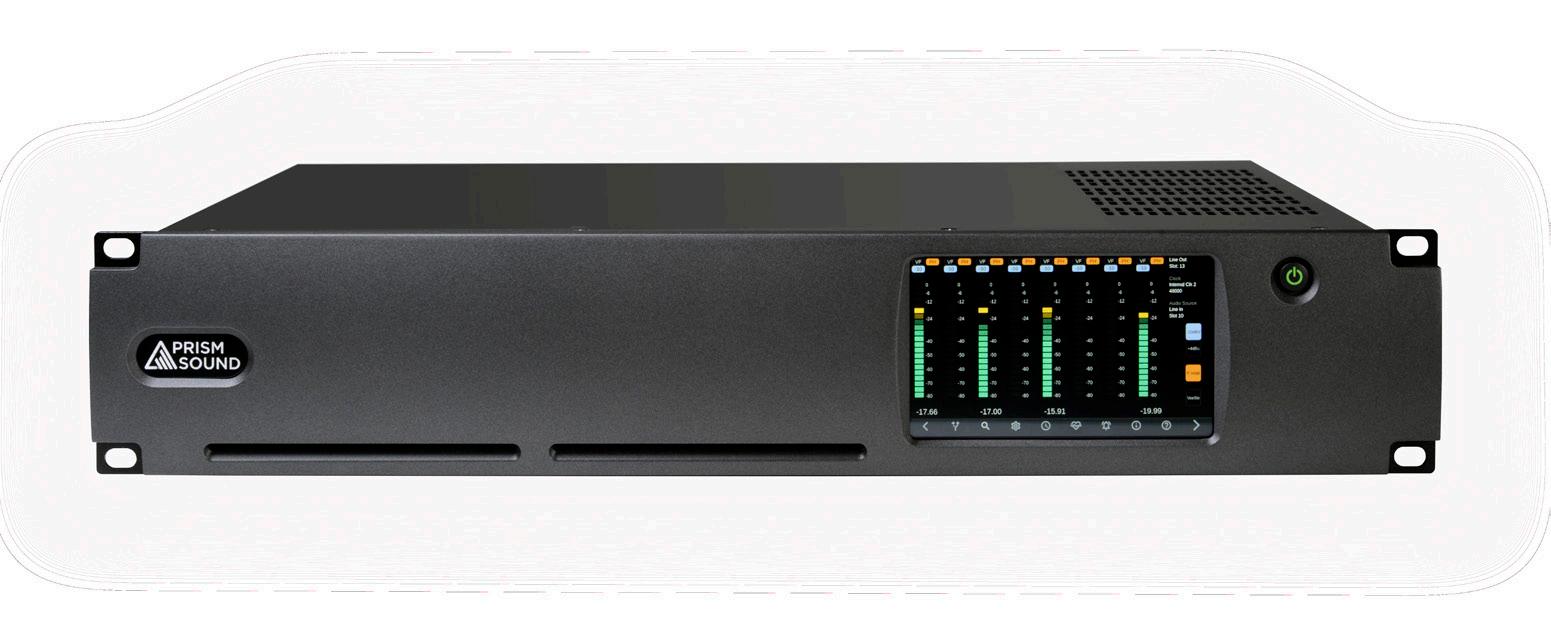



One of the most acclaimed artists of his generation, Rufus Wainwright released his new album Folkocracy on June 2 – a covers collection of folk classics featuring a stellar array of special guests. Headliner joins him for a chat about growing up in a folkocracy of his own, entering a new phase of reflection, and why “all is fair in love, war, and songwriting”.
A brief flash of Rufus Wainwright’s thickly bearded face graces our Zoom call before his camera shakily upturns and presents a view of an anonymous white ceiling. “I’m just lying down and resting my phone on my chest, so I’m afraid you won’t be able to see me much,” he breezily informs us as he settles down for an in-depth conversation that will see us strip away the layers of childhood experience, familial dysfunction, and personal and professional reflection that tightly wrap his new album Folkocracy
Released on June 2, Folkocracy is a collection of ‘reimaginings’ of folk classics and standards featuring the likes of John Legend, Chaka Khan, David Byrne, Anohni, Susanna Hoffs, Van Dyke Parks, Brandi Carlile, his sisters Martha and Lucy and many more. Its creation, he explains, was prompted by a period of reflection,
with 2023 marking both the 25th anniversary of his self-titled album and his upcoming 50th birthday.
The product of a formidable folkocracy of his own – the son of folk singers Loudon Wainwright III and Kate McGarrigle and brother of Martha Wainwright – he grew up steeped in the folk tradition, yet for much of his career has taken deliberate steps to distance himself from that world. And he’s enjoyed tremendous success in doing so, notching up 10 studio albums to date that veer between pop and classical styles, as well as producing numerous operatic and theatrical pieces, and generally garnering a reputation as one of the most versatile talents of the past three decades. So what inspired this return to his folk roots?
“Interestingly it was not planned at all,” he laughs, as he does a lot during our time together. “I came up with the idea of doing a folk record as a rather dubious concept where I’d watched the Grammys and, as I was watching the show, realized there are so many folk categories. And I thought, I can do that! I’m from a folkocracy! Whether I win the Grammy or not, this record was meant to happen! And I’m excited to be here for the ride.”
He certainly sounds content with his place in the world. His unconventional childhood and periodic battles with addiction and substance abuse are subjects he has seldom shied away from, with so much of his personal experience intertwined with his creative output. And while he remains candid as ever, his mood seems meditative and relaxed.
“I’m good,” he smiles. “I’m here in Laurel Canyon, gearing up for some live shows, I have a really amazing band. Obviously, we can’t bring Chaka Khan and John Legend on tour [laughs] although I will be meeting with them at certain places. I’m very excited. The main thing is that I just want it to be fun and in the folk spirit, which is about being inclusive, being joyous and not being too perfect [laughs].”

Working out which 15 songs would make the final cut on Folkocracy, and indeed how to factor in so many A-list guests, was a task largely undertaken by producer Mitchell Froom, with whom Wainwright has worked previously.
“I took about 30 or 40 tunes that I love and said to him, ‘you choose which ones you think would make a great record,’” he says. “As we got closer to making it, we started to work out who would be really good guests. And every session was fantastic. Singing with Chaka Khan was thrilling… a little scary, too. When she came into the studio for the first five or six takes I didn’t think we were going to get it. She didn’t know the song, she was going off on these other tangents. But then all of a sudden something clicks and it came out. It was one of those great examples of a true star, where there is a volatility to the situation. There is this danger that inhabits a person like that, which gives it that added adrenaline. I loved that experience and how unconventional it was.
“And then singing with my family [on Wild Mountain Thyme] was incredibly moving and touching. I started off the song but then it is continued by other close members of my family - my sisters and my aunt Anna McGarrigle, and my cousin Lily Lanken. And what’s lovely is that my mother’s banjo is on that song, so that was very moving.”
As we return to the theme of reflection, Wainwright is still learning to let go of some of the more troubling aspects that framed his childhood. Born into a musical dynasty, his formative years were besieged by a fiercely competitive relationship not only with his siblings but also with his parents. Indeed, he very publicly fell out with his dad after teasing him that he had only achieved a Rolling Stone cover spot off of the back of his fame. Today he is more philosophical about his past than ever before.
“The further I get away from it the more I’m amazed at how incredible it was, growing up in the atmosphere I did, having music around all the time, having my parents communicate musically,” he says. “They kind of hated each other’s guts, but they wrote songs about each other, and they respected each other musically. I didn’t see my dad that much but when I went to one of his shows he would sing about his life and me and Martha, and that was such a fascinating situation. And then we would start to return that ‘favor’ [laughs]. So that whole saga ensued and that was a wild period. But the more I look back the more amazed I am at how great it was.
“I also went through periods, not so much now, but maybe after my mother died, where I would look back
and go, ‘some of that wasn’t great!’ We were maybe too in touch with certain aspects of adult life that we shouldn’t have been. I was resentful to both of my parents for some of their behavior but now I am more into accepting and celebrating everything… but I had to go through the negative as well. That was a few years ago, so it’s becoming more rosy at the moment, which is a good thing.”
Despite the dysfunction of it all, he feels certain that the competitiveness within his family unit drove him to become the artist he is today.


“IT WAS INTENSE AND WEIRD BUT ALSO EXHILARATING AND VERY BEAUTIFUL WHEN WE JOINED FORCES.”
“It’s a total blood sport,” he states. “My parents and my sister Martha all demonstrated that to each other early on. My mother loved us, my dad loved us as much as he could at that timehe was in his own world for a time so it was a different kind of relationshipbut once we got onstage you became a whole other creature… and all is fair in love and war and songwriting. It was intense and weird but also exhilarating and very beautiful when we joined forces. It was an amazing education and it made me the musician I am today.”
While the regularity with which that competitive childhood streak reveals itself may have eased over time, Wainwright insists that he can still summon it up when required. The key, he tells us, is control.
“It’s still in there,” he smiles. “It’s in there but I’m better at diffusing it. And I have people in my life who do that as well. If I had married someone who was totally sycophantic and a ruthless worshiper who thought everything I
did was miraculous then I’d be in a different position. People in my life will be critical of me sometimes, which is important to have. So, I know how to diffuse it, but you don’t want to lose it either because it definitely gets the engine going.”
After much talk of growing up and those formative years in the family home, we refocus to the present day and that upcoming 50th birthday. As he has demonstrated, he is in a more reflective mood than perhaps at any other point in his life - the briefest glance at his body of work suggests an artist who rarely affords themselves the time to look backwards. And while he accepts that he is in as appropriate a place as any to consider his accomplishments to date, he’s keen to note before we part that there’s still plenty of new avenues and ambitions to pursue.
“On my last record I did look back to my early days in Hollywood and capturing that California sound, but it seems I’ve gone further now,” he says.
“I’ve gone back to the source. So I am in a more contemplative mood for sure. But now is a chance to clean the slate, contemplate it, throw it in the trash and come up with something totally new. I’m still writing a lot of songs, none of which I can talk about at the moment. But don’t worry, new Rufus is coming!”
RUFUSWAINWRIGHT.COM
“IT’S A TOTAL BLOOD SPORT. MY PARENTS AND MY SISTER MARTHA ALL DEMONSTRATED THAT TO EACH OTHER EARLY ON.”

Germany’s klar&deutlich supplied a complete CODA Audio system for an important Bundesliga basketball event, as Headliner recently discovered…
Currently sitting comfortably in the play-off positions of the easyCredit German Basketball Bundesliga (BBL), BG Göttingen occasionally has to play its fixtures away from its regular Sparkassen Arena home. This was recently the case when the team relocated to the multi-purpose 3700-capacity Lokhalle Göttingen, for a fixture against MLP Academics from Heidelberg.
Preparing the venue for a top-flight televised basketball game requires a great deal of planning and hard work. Strict regulations are laid down by the game’s governing body, particularly in respect of the court surface, spectator seating, lighting and audio provision. Bovenden-based specialist
klar&deutlich Veranstaltungstechnik was engaged to supply a sound system for the event, and chose CODA Audio to meet the brief.
Managing director at klar&deutlich, Jannik Nyga, describes the challenge: “We definitely had our work cut out! The BBL demands the most exacting standards in every respect. Lighting, in particular, plays a huge part in the setup - excellent lighting is necessary not just because of the fast-paced sporting action but also because of the television broadcast. The consequence of this is that much of the roof load is taken up with lots of lights. That doesn’t leave much room for pro audio systems.
“Because sound systems haven’t been so heavily regulated by the BBL, there have been occasions in the past where poor audio has been a problem. We were brought in with an explicit brief from the organizers to provide ‘highest quality audio’. It was essential that viewers could clearly hear the presenter for every announcement.”
According to Nyga, it was the use of a CODA Audio system that was crucial to a successful outcome.
“We only had a maximum of 200-250kg left per loudspeaker flying point, including motor and cables,” he explains. “Under normal circumstances, using another brand, that would not be enough to deliver flawless performance but fortunately our light and powerful CODA systems enabled us to meet the challenge. We were able to hang six ViRAY tops on each of the points.”
As well as providing premium clarity for announcements, the team also had to take account of the intermission sound, which Nyga describes as: “Preferably old-school hip-hop where the bass plays first fiddle! In order to be able to offer this in a powerful way, we originally wanted to hang a bass cluster above the playing area but this couldn’t be realized for various reasons. That’s why we had to go with the four-point system - and it worked like a charm.”
The complete system at Lokhalle Göttingen comprised 24 ViRAY for the main grandstand, 16 N-RAY for the fan grandstand, eight SCV-F Sensor Controlled Subwoofers (four by two flown) and two G712-PRO multifunctional loudspeakers, all powered by five LINUS M-RACK compact fourchannel touring rack amplifiers.
Indoor sports events like these present their own unique challenges, but with CODA Audio at their disposal, the klar&deutlich team met the brief with something to spare.
“The voice presence was absolutely perfect - you understood every word the presenter spoke throughout the whole hall. We were able to go really loud whilst still having absolute feedback security,” Nyga concludes. “It was a pressure job that turned out to be fun - considering that we had to set up the sound reinforcement so quickly and with so much compromise, the hanging and the setting up of the technology was super. One thing that always proves true with CODA Audio is that if you do the groundwork accurately, you don’t have to do much after the fact - it sounds exactly the way it’s supposed to sound.”



Rick Kamlet, senior manager of product management at Harman International, delves into JBL commercial loudspeakers, the intricacies of loudspeaker installation, highlights the newest commercial JBL speakers introduced at Infocomm 2022 and discusses the innovative strides the company has made over the years.
bY Alice Gus t nosfaCommercial loudspeakers can be a pretty broad topic to cover, and they fall into a variety of categories. Can you provide us with an overview of these categories?
We tend to divide our commercial loudspeakers into a few main categories. There’s in-ceiling, on-wall (which are also called surface mount speakers), in-wall columns (which are the long narrow column speakers), pendants (which hang down from
the ceiling) and then a variety of landscape models. There are some specialty models that don’t exactly fit into the six categories. But these are the six main ones.
What are the primary considerations for installing commercial loudspeakers?
You start with the general objectives which are accomplishing whatever sound quality and character that’s
right for what’s happening in the space. So for applications that include music, you want the music to be pleasant and clear, and for applications with voice, the voice needs to be highly intelligible. In other words, understandable. There are some technical principles that one then needs to follow, but pleasantness and intelligibility are the overall objectives.
Taking this one step further, there are many factors to consider about how you accomplish that. You want to think about what sort of activities are happening in the space and therefore how loud it needs to get, how much bass is going to be required, what form factor of speakers are going to work best with the geometry of the space, how high the ceiling is, and whether the ceiling is a suspended grid, a hard cap ceiling or an open structure, what’s going to fit into the decor, what the budget is for the project, where there are places for installing the speakers themselves, and things like whether the facility needs to meet certain safety or fire regulations.
We make available various application tools to help with the designing of the system and help it work well. For example, for ceiling speaker systems, we make available – for free – a programme called Distributed System Design that helps the designer figure out which speakers will get to the sound level that’s needed, how far to space them apart, if they need loudspeakers for additional bass, which loudspeaker fits with the speakers they’ve chosen to pair with and how many to use.
When you’re looking at the geometry of the room, how does a square or rectangular space differ from a room that is irregularly shaped?
The main things that are good to look at are how deep the room is and how wide the room is. For example, a room that’s especially deep may be especially challenging to get sound into the place where the listeners are located, for instance if one is wide and not very deep, then there are different challenges. If it’s a high ceiling, it may be difficult to use ceiling speakers above a certain height because the sound has to travel quite a distance from that high ceiling.
That’s one of the reasons why there are pendant speakers, for example, in
today’s open architecture ceilings: to space the sound closer to the listeners and make it more pleasant for music and more intelligible for speech.
Does the sound change the further it travels?
It does. It’s clear when it’s fairly immediate. As it travels, there’s air absorption that absorbs some of the high frequencies, and so on. With high ceilings, one of the things that trips you up is the fact that the ceiling speakers often overlap with each other and the farther away from you they are, the longer the differences are in how long it takes the sound from each speaker to reach your ear. So if you’re doing a high ceiling, you want to use a speaker with a very narrow coverage so that the listeners are only listening to the speaker that sits above their head rather than listening to every speaker in the room hit their ear at a different time sync, which then makes the music unpleasant and the speech unintelligible.
Tell us about the challenges with outdoor placement and some unexpected places you might find speakers in…
Designers try their best to hide the loudspeakers; architects and fitness facility managers don’t want the speakers to be terribly visual or to be a major thing that people see when they go into the space. So if you look around, you often spot speakers in really unexpected places. In outdoor spaces you can find them hidden in bushes or hidden in soft recesses and all sorts of places. There are places that build loudspeakers into trash cans! Some of the more unique places include building them into lighting posts, where they’re just grills on the sides of the lighting posts so that you don’t realize there’s a loudspeaker in there.
We just introduced a speaker that probably falls into this category called the GSB and they are garden subwoofers. It takes a little bit of excavation, but they
actually go underground and the only thing that sticks up above the ground is the port outlet for the sound and a little cap that goes on that. So it’s kind of reminiscent of a mushroom a little bit, but the real business end of the subwoofer is actually buried underground.
Tell us about some of the newest commercial speakers that were introduced at Infocomm last year.
In addition to the GSB landscape subwoofers we also introduced Control 89MS, which is an above the ground landscape subwoofer. Those would go into places where you really don’t want to excavate.
Also, the GSF full range landscape speakers are two full range models that are aimable; one with a three inch and one with a six inch. We also introduced SLP speakers, which stands for sleek, low profile speakers that go on the walls. They’re so tight to the walls that they actually meet ADA requirements to go into spaces where that’s needed.
Lastly we introduced Control 68HP which stands for high power, which is a high power pendant speaker. We’ve had Control Contractor 60 Series Pendant loudspeakers in the line for a number of years. This is one that gets louder than any of the other speakers in that line that we make. Most of these new speakers that we introduced at the Infocomm show have been recognized by Red Dot for their industrial design excellence. We hope that gives customers confidence even before the installation takes place that these speakers will fit into their decor and have a nice, elegant appearance.

Tell us more about JBL Professional and what’s possible with today’s loudspeakers in terms of the innovative strides the company has made over the years that might not have been possible 10 years ago.
As far as what’s possible today that maybe wasn’t 10 years ago, we’re finding that we have to move with the demands of the marketplace. There are changes in architecture that we have to adjust to: we’re making smaller, lower profile models that fit in better with the decor of spaces.

There’s a movement to column loudspeakers in the industry right now where they’re less visually obtrusive. They provide better coverage of a particularly deep space – meaning the room geometries – they excite the room reverberation less, they’re clearer for speech and even better for high fidelity music. So we make the very smallest products to the very large column speakers like the Intellivox columns which are used in very large places.
Another change that comes to mind, which has become much more so over the last 10 years, is more environmental consciousness. All of our speakers comply with certifications. We’re using more recycled materials all the time; we’re making our speakers lighter weight, and sometimes that’s not thought of
as being environmental, but it does not require such heavy support structures and buildings and so on. We’re making them more energy efficient as far as turning voltage into sound. We’re also putting more energy efficiency into the manufacturing processes.
Where do you see tech trends heading in the next year?
There are always changes in architectural preferences and when that happens, loudspeakers adapt to the trends in architecture. So for example, there is a continuing trend toward more open structure or open architecture ceilings. We’ve been seeing it happening more and more in the last decade in retail stores, restaurants and so on. So we came out with our Control 60 Series line of pendant speakers to make them easier to install to the beams that you find in these open structure ceilings, and to get the sound closer to listeners for better sonic quality. So it’ll be exciting to see what changes take place. We’ll be there to adapt our offerings to meet any new requirements.










Chanda Dancy was destined to be a composer. Composing orchestral works at the age of 12, fast forward into her adult life and Arts Boston named her one of 10 Contemporary Black Composers You Should Know. She explains how her latest project saw her working on a film about her musical idol…
Directed by Kasi Lemmons, I Wanna Dance with Somebody is a joyous, emotional, heartbreaking celebration of the life and music of Whitney Houston, one of the greatest female R&B pop vocalists of all time. The trick, says Dancy, was to steer away from the melodrama by being purposeful and respectful with the score…
Long before you were a composer, were you a big Whitney Houston fan?
I actually remember the very first time I heard I Will Always Love You,
where I was, and what I was doing. I was in middle school and we were having some sort of field day, and the administration had the radio playing and I Will Always Love You came on. I remember being a little bit confused because there were no instruments, it was just her voice at first with the acapella part. When you’re a middle schooler, you’re like, ‘Oh, is that on purpose?’ But then it grows and then you understand, ‘This is a phenomenal song. This is different from anything you’ve heard before. This is amazing.’
That moment stuck with me. But my favorite Whitney Houston song is definitely Greatest Love Of All
With that in mind, was it an immediate yes when you were asked to score the biopic, I Wanna Dance with Somebody?
It was one of the honors of my lifetime. There’s no way when you’re a little kid that you would imagine that you will one day be doing something like this. It’s amazing. It’s thrilling. I’m so proud. When Kasi Lemmons and Maureen
Crowe contacted me, my jaw hit the floor…the nerves came later! It’s like, ‘Okay, let me make sure that I do right by Whitney and her family.’
Naturally, being about Whitney, music is integral to this film. What was the director’s vision for the score, and how did you allow the film’s musical numbers to shine?
It started with a conversation with Kasi, who knew Whitney and her family. It was important to be purposeful, respectful and beautiful when it came to the score – that’s where the score needed to do the heavy lifting. It wasn’t so much just being wallflower music in comparison to Whitney’s iconic, amazing songs, it had to have a purpose, or else why be there? So that was what started the conversation, just talking with Kasi and also the head editor, Daysha Broadway. The three of us wanted to truly honor Whitney in the most heartfelt way that we could. And I feel like we pulled it off.
The score is the emotional glue that weaves in between Whitney’s iconic songs. Was it tricky not to feel exploitative when composing a score that could very easily become melodramatic due to the nature of Whitney’s private life?
We definitely did not want to be melodramatic, but beautiful and respectful. That was the line that we needed to balance. I think the best
way that we achieved that was to be very purposeful about bringing out the glamor and the sparkle and that special something that Whitney had. It comes down to respect: are you in it for the gossip? Or are you in it to fall in love all over again with this real human who touched us?
In the scenes about Whitney’s private life, Kasi wanted a touch of angst, a touch of darkness – but only a touch. We’re not being TMZ here and we’re not being like, ‘dun dun dun…look at what she’s doing!’ We’re being non judgmental in the approach, so, that had to be done right and definitely required a delicate hand. I did see a few comments from other singers and celebrities who knew Whitney personally and they were speaking at the premiere here in the States, and it was a glowing review. People said, ‘Finally, this is the film that does Whitney right.’ And that’s from people who knew her personally and have a little bit of skin in the game. That was very good to hear.
Two main themes, The Genius Theme, and The Waltz Theme, permeate the score. The former represents all of Whitney’s onstage glamor: it is grand and sweeping, while the latter represents her private life. Tell us about those two themes and what they bring to the film…
The main themes essentially represent different sides of Whitney herself. There’s The Genius Theme, which is big, grand and sweeping – this is Whitney’s onstage life. This is her dripping in diamonds and cascading down a mansion staircase with silk gowns and angel wings. It’s very sweeping – an old Hollywood, beautiful sort of score.
It’s contrasted with The Waltz Theme, which is a complicated waltz melody. It’s still very beautiful, but it has unexpected twists and turns, which represents Whitney’s private life. In using these two themes, purpose is the key word here. I keep saying that word, because it’s very important – everything we placed, and the placement of the themes and what those themes said in the moment, were very much on purpose, very deliberate. That’s what helped steer away from melodrama. It was a proper journey, musically.
How did you weave the score into the story and soundtrack, especially considering these are songs that are instantly familiar to most people?
There are quite a few moments where one of her iconic songs will end and then I needed to make sure that I was coming in in the same key and in the same sort of vein as a song. That was a very important thing for seamlessness.
“ IT WAS IMPORTANT TO BE PURPOSEFUL, RESPECTFUL AND BEAUTIFUL WHEN IT CAME TO THE SCORE.”

“YOU
Whitney’s iconic Super Bowl performance of The Star Spangled Banner in 1991 features in the film. What was the experience like when working your composition around these real, memorable events, and weaving them into the tapestry of the score?
working with orchestra-only, but then I went to the sound design company and next thing you know, I’m using Waves plugins to record my guitar or record my violin and putting it through various plugins and creating a different, fresh kind of soundscape.
the MIDI composition as well as the recording of any live solo instruments here at my studio, as well as any synths and combine them all in one Pro Tool session – working with that actual audio.
It was so invigorating. That particular scene as well – the cue that comes directly before her performance is really building up to that performance. So it’s very thrilling and gives you the feeling that the hairs are rising on your arms in anticipation of something so great. That was a really great moment. Right out of USC Film school, I worked for a sound design company and I learned all about sound design, sound editing, dialogue editing –you name it – and that spilled over into my composing. I was solely a classical orchestral composer
I purchased Waves Diamond years ago, and I probably have every Waves plugin now! I also love using them to perform live. Waves’ panning plugin makes my violin sound pan from one speaker to the other and it adds this extra dimension in a live performance. That’s really cool.
What is some essential kit you always use in your studio that you couldn’t do without?
If I’m recording vocals or things like that you’ve got Vocal Rider and then mastering plugins, like MaxxBass and the L1 Ultramaximizer. Waves have been a part of my composing process since, I would say, 2006.
I’ve definitely spent way too much money on them [laughs]. Anytime there’s an upgrade or anytime there’s new bundles, I just collect more. I compose solely in Pro Tools, so I do
It harkens back to when I was working at the sound design company – it’s not just the traditional sound of the instruments or the synthesizer or whatever you’re recording – you can always turn it into something completely different and completely fresh using awesome Waves plugins.
CHANDADANCY.COM
WAVES.COM
CAN ALWAYS TURN IT INTO SOMETHING COMPLETELY DIFFERENT AND COMPLETELY FRESH USING AWESOME WAVES PLUGINS.”
YOUR PORTAL TO SPATIAL AUDIO CREATION
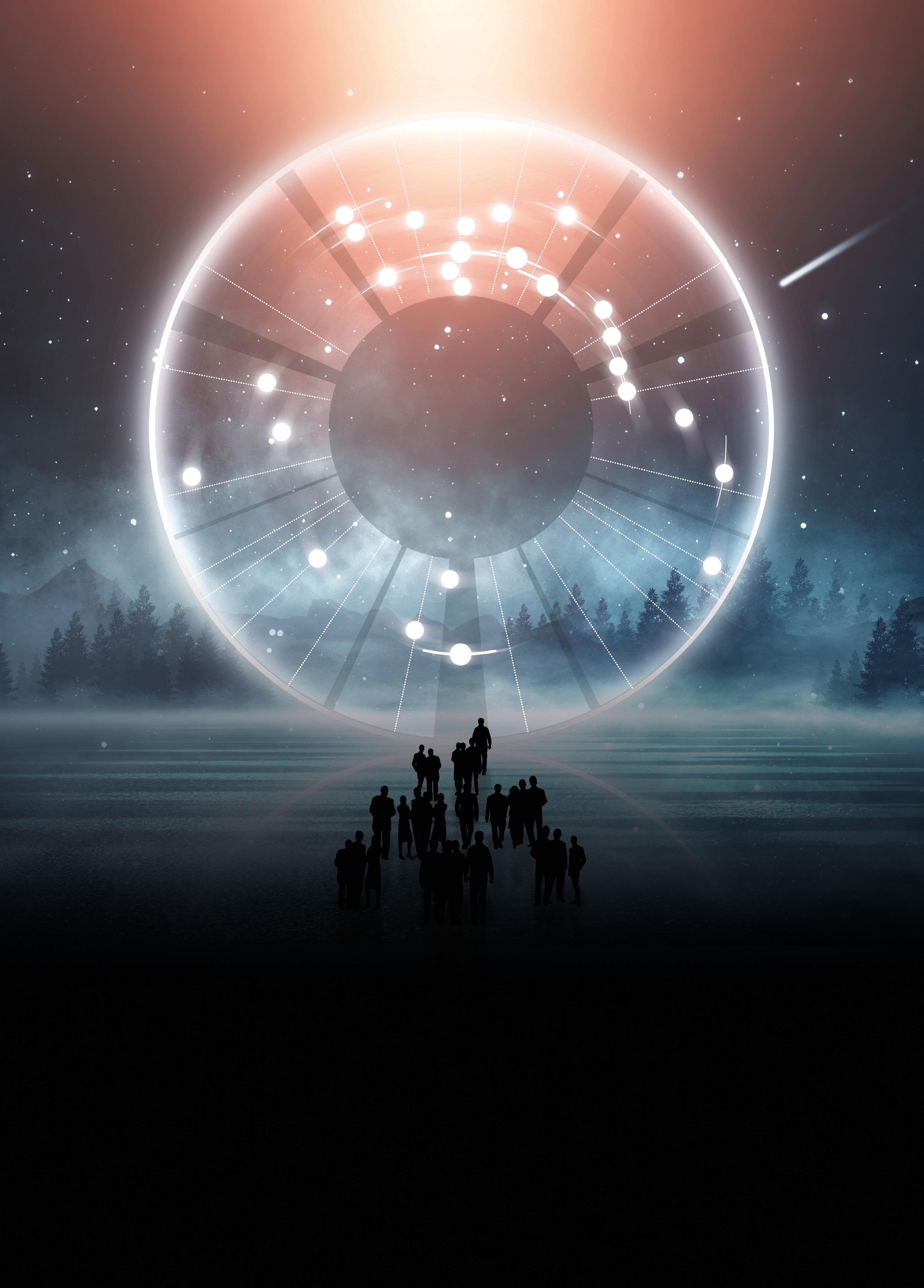
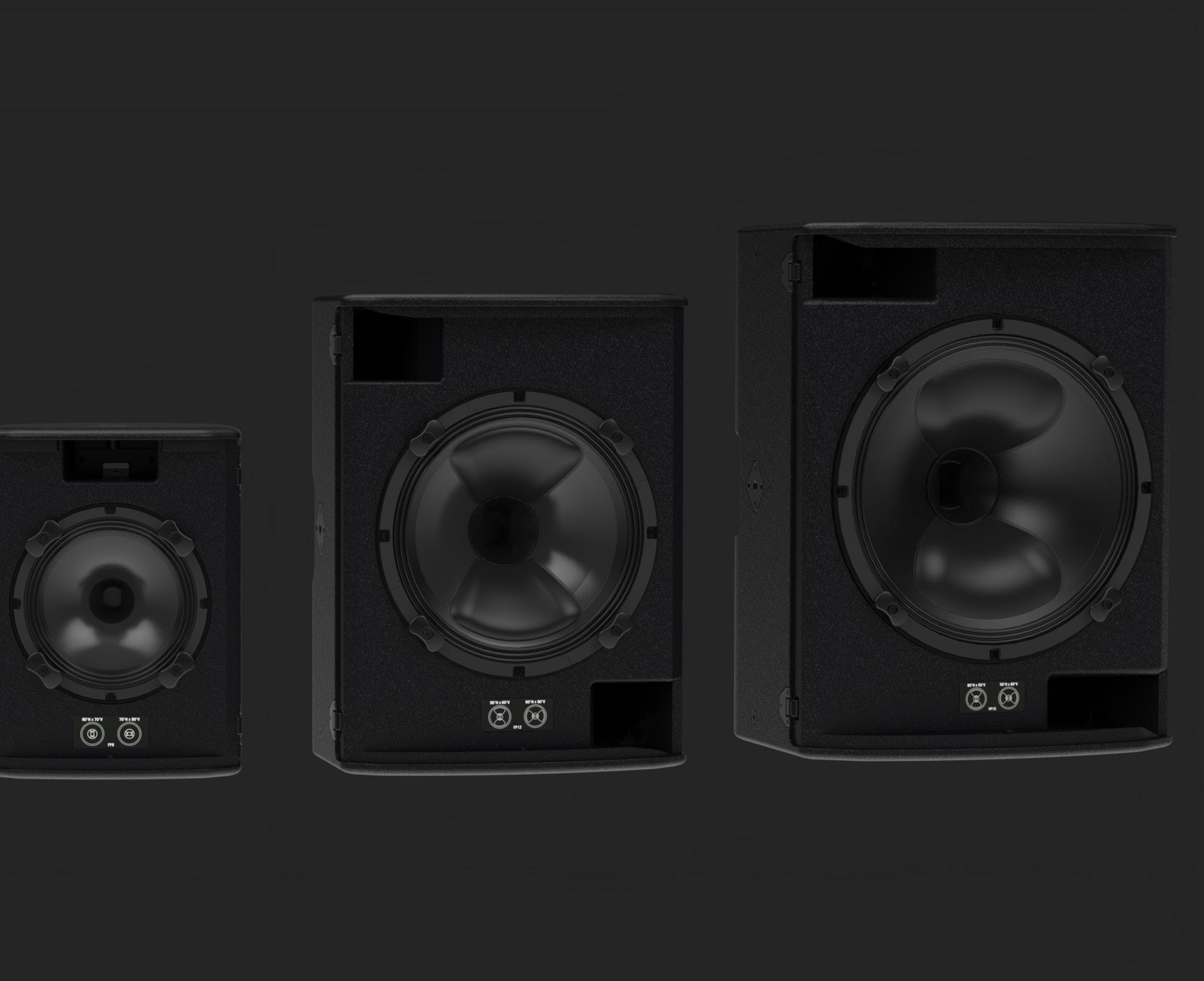
It’s been one of the busiest starts to a year in recent memory for Martin Audio, with a flurry of new products entering the market and a fulsome programme of festivals on the horizon as the global live events sector returns in earnest. MD Dom Harter and brand marketing director James King sit down with Headliner to serve up their 2023 midway report and open up on what the rest of the year may hold…
The first six months of 2023 may well have provided the majority of pro audio firms their brightest start to a year since the dark days of Covid, but for Martin Audio it’s been one of the most fruitful in its storied history. As we discover through the course of our chat with two of its most senior executives, the company is, “in the best shape I’ve ever seen it,” according to brand marketing director King. The reasons for this are manifold. Of course, the return to normality on the live events front is plain for all to see, but Martin Audio’s efforts to bring a raft of new, potentially game changing, products to market have made it a notably buoyant first half of 2023. The new FlexPoint Series for the premier rental market was described by Harter as “the finest live sound offering in the company’s history”, while the new TORUS 8 for small-medium-sized applications marks a significant addition to the brand’s portfolio.
Here, Harter and King elaborate further on what these launches mean for the business, as well as the trends shaping the market and much more…
How would you sum up the first half of 2023?
Dom: As a global manufacturer, I think it’s really easy for people to forget that Covid has been in
different places at different times all over the world. And the first six months of this year is the first time, particularly with China and Asia opening up, that we are really seeing the world market back, and also at a time when the supply chain crisis is not completely behind people. So, in the most positive sense you have this latent demand on the installation side where you’ve had projects that were put off due to the pandemic and they are now catching up, while the live sound stuff is back with vengeance. So, it’s been an incredibly busy first six months, but we’re not grumbling.
James: I still pinch myself to see the industry being back and looking healthy when you wondered whether that would be the case, and the demand for Martin Audio is off the charts. It’s an exciting time, and we’ve introduced lots of new products. The company is in the best shape I’ve ever seen it in the 10 years I’ve been here.
Tell us about FlexPoint and the market it is designed to serve?
Dom: It’s very easy, especially at this time of year, to go and see all these line array systems and think that that’s the touring solution. But the reality is that our rental partners are doing everything from
small conferences all the way up to the biggest stages. We had some successful products in range called DD and XD, but they were a bit long in the tooth and it felt as though they had been designed in silos. What we wanted to do with FP was have a broad series of small point source products - nothing a customer could look at and not see why it would be a benefit. And we wanted it to have this unified voicing and approach so that people get that signature Martin Audio sound from a complete range. Over and above that for a rental provider it has really made the strongest line-up that we’ve had for live events solutions in the company’s history. We have a decent number of big arrays using all of our optimisation technology; we came out with our constant curvature stuff over the last couple of years; and to now extend that down to four-inch speakers really means there is a proper up to date flexible solution for any production environment. We were very cautious about launching anything in the last three years that had too much of a drain on capital expenditure as they were going to be recovering themselves, and now we’ve seen the buying come back, so to bolster our product ranges in those areas makes a lot of sense.
“THE COMPANY IS IN THE BEST SHAPE I’VE EVER SEEN IT.”

Another key launch was Torus 8. Tell us about that.
James: That was our second addition to the constant curvature family. The Torus 12 that had been out for two years did particularly well, it was another long-awaited product in our portfolio filling that key gap for throwing distances between 12-30m where maybe point source doesn’t quite cut it and a line array wouldn’t be the right solution. So, the Torus 12 really took off when we launched it, especially in installation because live sound was a bit intermittent, but we’ve increasingly moved out into live sound, and its flexibility across different applications has proven to be a real winner. People have liked the dynamics of the product and the sound consistency. And it was just inevitable that we needed to look at a smaller format. It’s just a really strong addition to the portfolio.
Dom: For those that don’t know us, you might hear us saying that we’ve been here all this time and think that we’ve only just figured out we didn’t have sound system that were good for 15-30m of throw! But it’s worth highlighting that we don’t enter a market unless we think we can change and improve it. There has been a number of competitive products over the years that were targeting those sorts of areas, and when I joined the company our existing markets needed furnishing with lots of new product development, so we focused on strengthening areas where people already knew us. That gave us time to innovate and look properly at segments that Martin Audio didn’t operate in and figure out where we could do things differently and solve customers’ problems.
What I would say about Torus 8 is, because Martin Audio had this presence in rock’n’roll touring, houses of worship and production aspects, we didn’t really have a big presence in theatre. And with Torus
8, alongside FlexPoint, it enables us to give our rental partners or installation companies something that’s geared to mid-sized theaters where you need a lot of coverage and a varying amount of throw.
What does the market split between rental and installation look like today?
Dom: In some respects, we were pretty lucky at the beginning of Covid because a lot of the install markets that we are successful in were either not that affected, or they were such long-term projects that they were also not affected. And on the live side, we got quite involved in the We Make Events stuff because there was no point in making a load of live sound products and waving them in people’s faces when they haven’t got any money. And broadly today, the live install split is on its way back to normality. It’s not quite there but certainly we are making a lot of sales to new and existing rental partners over the past 12 months or so and then reinvesting moving forward.
In install land we are still going through a latent demand, so there are people who were always going to put a new sound system in venue X and are now feeling confident enough to do it. For us, we are on the way back to it being almost split down the middle. But there is going to be a rubber band effect as different markets come back, deal with latent demand, settle, and then go back to growing how they were before.
How is Brexit impacting the business in 2023?
Dom: It’s really difficult. Has it had an effect? 110% yes. I’ve got two more warehouses in different countries that I didn’t need two years ago, therefore I have a load more stock I didn’t need. We aren’t doing much carnet type stuff, but anything that causes uncertainty for our customers ultimately causes uncertainty to us.
And the difficult thing for us and any manufacturer is that obviously you have the industry coming back with aplomb post-pandemic, but then you have whatever negative effect Brexit is having, so to quantify it with a number is almost impossible. We are the last big speaker manufacturer in the UK and we are part of one of two large groups of audio manufacturers in the UK. We spend every single day trying to make it easier to do business with us and better to own our stuff. So, anything the political environment does to get in the way of that has to be a negative. Simple as that.
What does the remainder of 2023 hold for Martin Audio?
Dom: This is always a really exciting time in the year, as we get to see all the amazing things our rental partners do across the summer with our products. Beyond that, we have a lot going on in and around some of the green initiatives we’ve been running. And there are at least one or two cheeky products…
James: There is going to be some more development in software as well, so it won’t be quite as busy on the new product front as the first half of the year, but there will be some nice additions to the portfolio, and we’ll be continuing the momentum.
MARTIN-AUDIO.COM




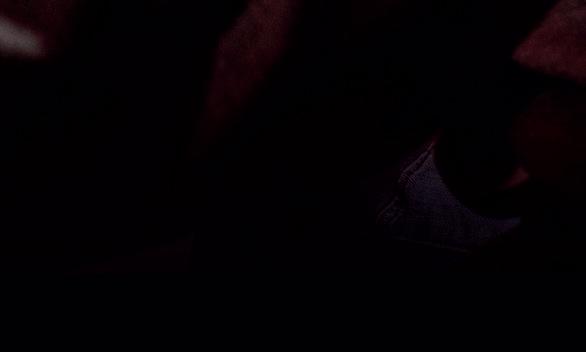
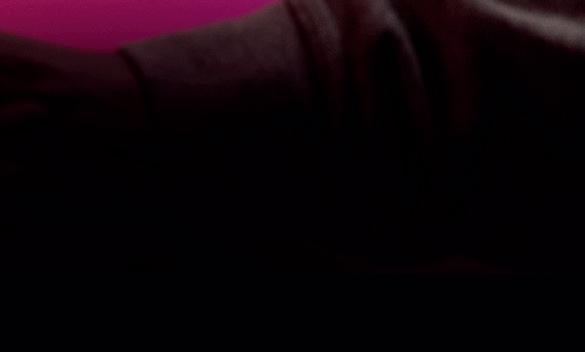
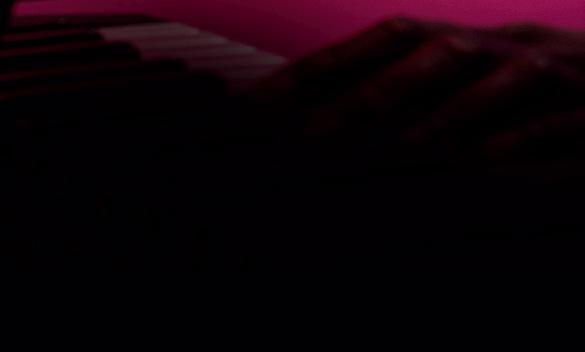
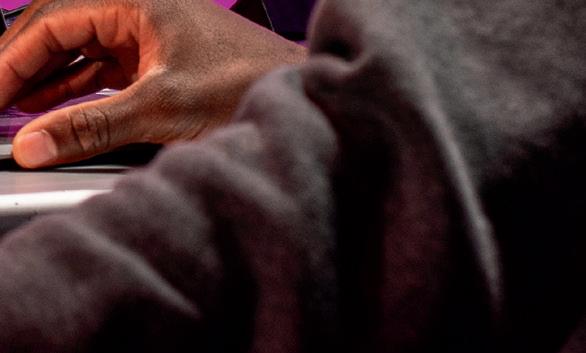
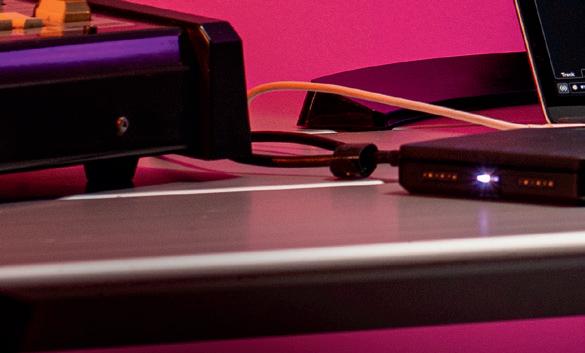


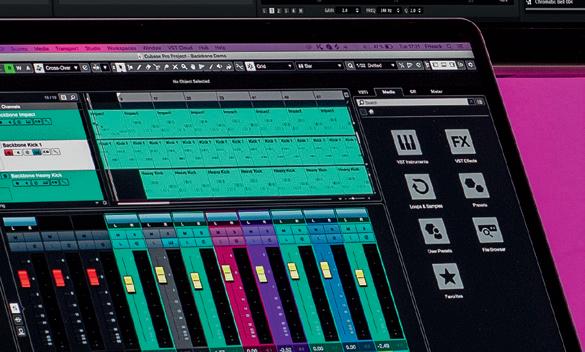
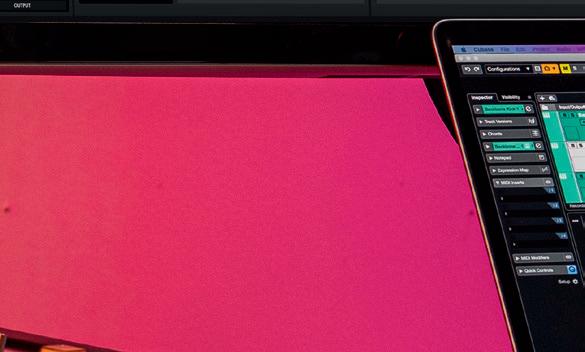
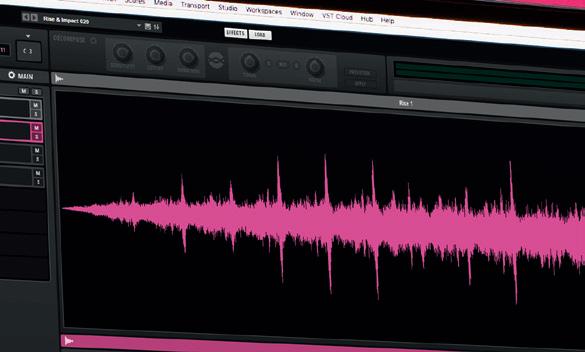





A revolutionary way to design your own drums – Backbone is your new, innovative drum designer for single kicks, snares, hi-hats, percussion, rises, hits and more. Layer up to eight samples and shape them with classic subtractive synthesis, decompose samples into tonal and noise elements and re-synthesize samples to manipulate them in unheard ways.
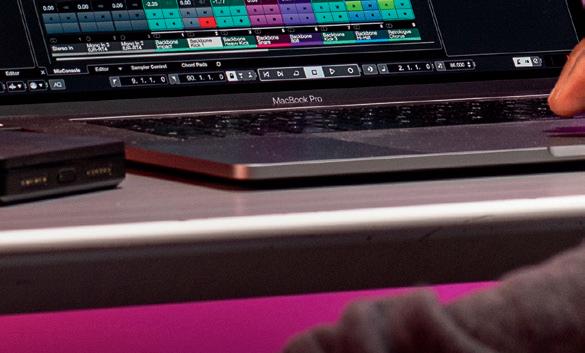

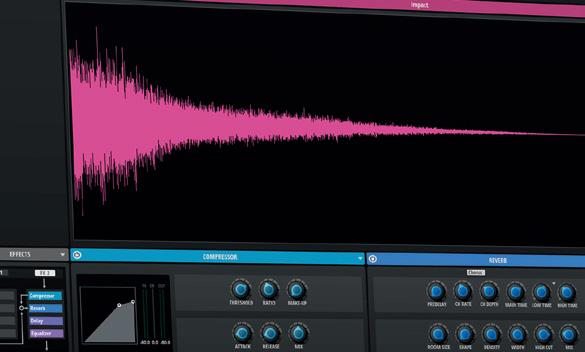


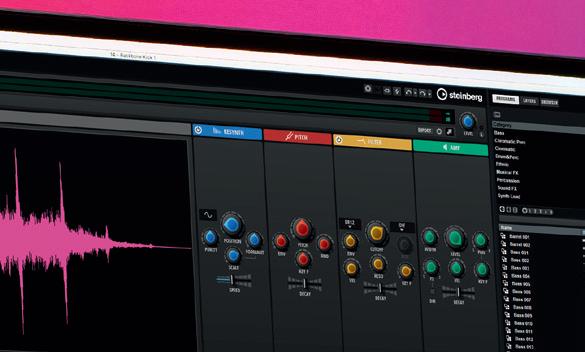
steinberg.net/backbone



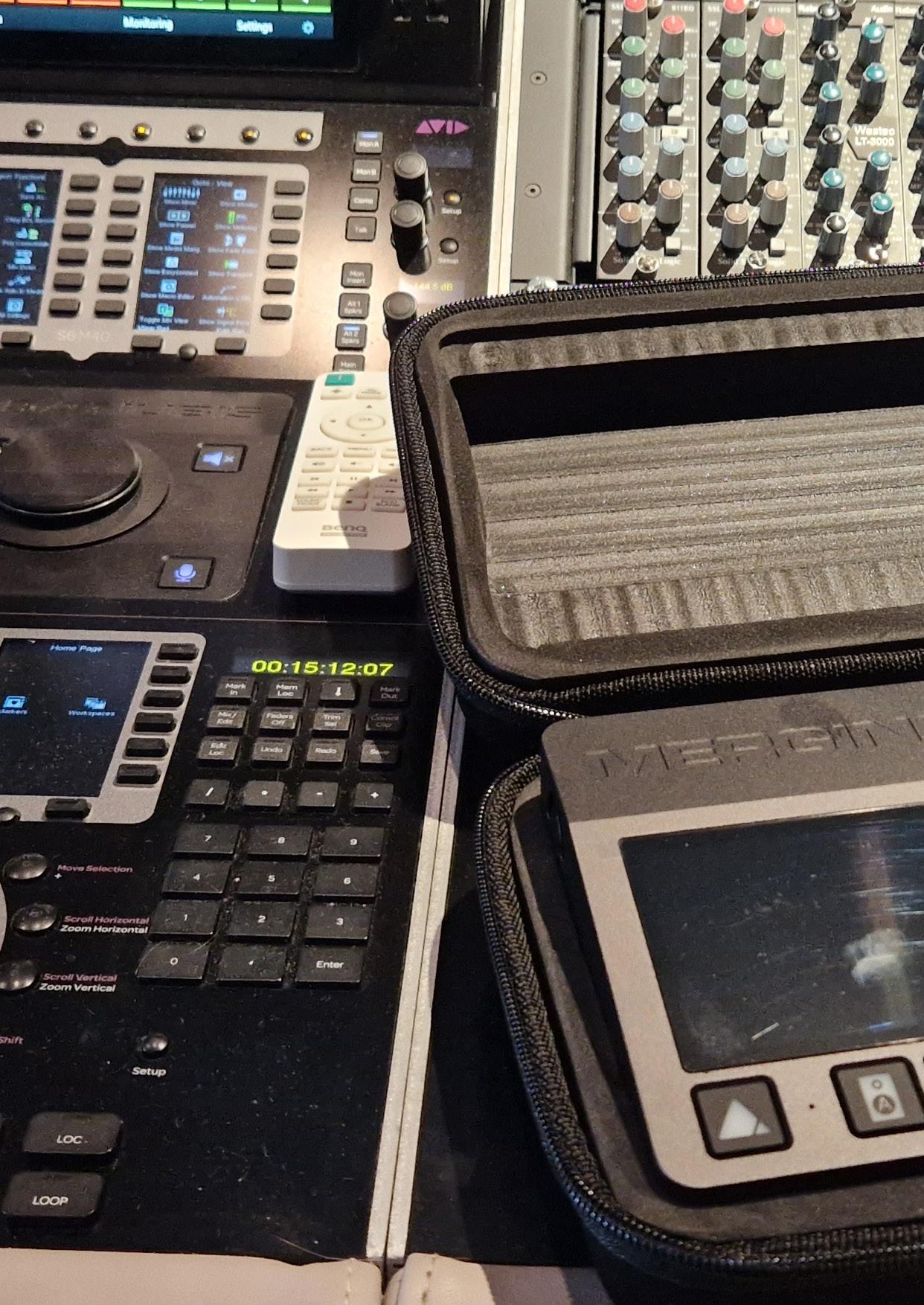

Soundville Media Studios is one of Switzerland’s top multi-purpose recording and mixing facilities, servicing everything from film and TV productions to pure audio meditation products. Headliner caught up with founder and sound specialist Rene Zingg to discuss the past, present, and future of the studio, as well as its reliance on fellow Swizz brand Merging Technologies, and the future for Atmos…
The old adage ‘if you do what you love, you’ll never work a day in your life’ rings truer for Soundville founder Rene Zingg than perhaps anyone else. From the moment we join him via Zoom to talk all things Soundville, he is effusive in his love of audio and the business he has cultivated over the past 40-plus years. His passion is almost uncontainable. “I’ve spent the past 43 years doing this for 80-100 hours a week – not working, doing my hobbies!” he beams less than five minutes into our conversation. His enthusiasm is instantly infectious
and is rooted in a lifetime surrounded by sound.
“It started with my father,” he tells us about his introduction to audio. “He was always recording and filming, so I was raised with this kind of equipment. Then I learned several instruments, so in my first band I was the guy who did all the recordings. So, before I started Soundville I was a home recorder, although that term didn’t really exist back then.
“I then had to do military service, and the plan afterwards was to study electronic engineering, but I just kept doing my hobbies, building a studio, and in 1979 I built Soundville. And in 1980 I started recording doing jobs for clients. After five years we rented the new premises, which is where we are today.”
Crucial in laying the groundwork for Soundville’s future was Zingg’s relationship with legendary studio designer and audio engineer Tom Hidley and personal friend and architect Thomas Rast. During one of Zing’s encounters with Hidley, he
decided to show him the plans for what would become Soundville.
“He started scribbling all over my plans,” Zingg laughs, describing the meeting. “I flew back to Switzerland and met my friend and architect Thomas Rust who did all the drawings, and we cancelled all our plans and started from scratch! I paid one year for the whole lease here without building anything because we redesigned everything.
“We then went to visit Tom in Montreux with these blueprints that were not rough sketches but Swiss quality plans from my Thomas,” he
continues. “And from this moment on, Thomas Rast did all the architectural work for Tom Hidley all over the world. And I feel like Tom adopted me as his audio son! I would go and check out all these acoustic details with him all over the world.”
Having established the studio with the guidance of Hidley, the next piece of the jigsaw was the acquisition of numerous products from fellow Swiss brand Merging Technologies – products which would serve as the cornerstone of Soundville’s high-end offering.


“I would go to every AES, and around 1995 everyone was launching their own DAWs,” he says, explaining his introduction to Merging products. “At every other booth there was a new company launching a new DAW. There was Sound Tools by Digidesign, which was upgraded to Pro Tools, and there was Merging coming up at the same time. So, I went through all these different manufacturers and compared them, and at the end of the day it boiled down to Merging and Digidesign. The dealer for Digidesign in Switzerland was on the same plane as me and we discussed this, and in the end I decided to make my decision on the people rather than just the DAW. With Digidesign, if I had a problem, I would have a ninehour delay, whereas with Merging I would have zero hours delay and they are a two-hour drive away. It was easy. And with Merging, from the first day, everything was of the highest possible quality. So, there were technical reasons, logistical reasons, and it was simply the best. It was obvious.
To this day, Merging products reside at the heart of Soundville’s setup.
“We have one Horus, four Hapis, three Anubis, three Pyramix,” Zingg says. “The Dolby Atmos team were so impressed, they said they have never heard such precise low-end.
“The Anubis is unbelievably flexible. You can select as many sources as you wish. And we have the Pyramix output. Within Pyramix you can do Atmos mixing even without using the renderer because you can address everything up to 22.2. Then we have the return from the Dell renderer in Atmos – 7.1, 5.1, stereo, and the binauralisation, which is routed directly to a headphone output of one of the Hapis.
On the subject of Atmos, Zing believes that despite the subject’s domination of the industry’s headlines of late, its widespread adoption is going to something that develops over time, trickling rather than flooding into the mainstream. Indeed, such is Zingg’s faith in the
format that he is in the process of completing a period of construction work that will see Soundville offer four Atmos rooms.
“We have the Dolby Atmos Music plate and Dolby Atmos Home Entertainment plate,” he concludes. “We heavily passed all the criteria they ask for. The thing is Swiss people are very resistant. There is no actual demand for Atmos, so having said that, for the first time in 43 years I have had to do some marketing!
“We post on social media, we invite clients, and everyone who hears it wants it. Now, 90% of all the productions here are done in Atmos. Back in the old days when we had
mono, we found that we suddenly had stereo, but a lot of people didn’t know what to do with it, so you had people putting one voice in one speaker and another voice in the other – people were spending a lot of time working out how to properly use stereo. But now everything with stereo is fixed and you can’t do anything new with it. Now we have Atmos, and it’s so beautiful. You can experiment, do new things, try out whatever you wish. And now clients are freaking out as soon as they get to hear it. The demand will come.”
MERGING.COM
SOUNDVILLE.CH
“NOW WE HAVE ATMOS, AND IT’S SO BEAUTIFUL. YOU CAN EXPERIMENT, DO NEW THINGS, TRY OUT WHATEVER YOU WISH.”


On his current Ferxxo Nitro Jam Underground tour, Colombian reggaetón and cumbia superstar Feid is pulling out all the stops, unleashing an explosive, neon-green spectacle complete with LED video walls, lasers and monster trucks onstage. Monitor engineer, Carlos “Carlitos” Dickson explains how the singer’s tour requirements have skyrocketed…
Feid’s audio tech is spec’d by Dickson, a Latin Grammy-winning and multinominated engineer as well as a producer who is providing sound for the tour through his Miami-based company, Carlitos Pro LLC. Dickson relies on a streamlined rig based on a Lectrosonics M2 Duet digital wireless IEM system with four M2T dual-stereo half-rack wireless transmitters, an M2CActive Antenna Combiner and M2Ra belt-pack receivers.
Before this tour, Feid was mainly playing clubs with only a fourperson team. This tour has seen the operation expand dramatically as Feid’s popularity continues to climb.
“Right now, Feid is number seven on Spotify Global,” Dickson notes. “Before, it was just four of us: the artist, the manager, the producer and me. Now, we have 56 people on our crew!”
No matter the size of the venue, for Dickson, fidelity comes first: “The Lectrosonics gear sounds completely amazing,” he tells Headliner . “I feel like I’m in the studio when I work with the inears; it doesn’t cut off frequencies, it doesn’t have a filter, it doesn’t compress the audio in any way.”
Feid and Wain (his onstage vocal producer) had the same reaction when they heard the system: “I told the guys, ‘Let’s try it. I like how this sounds; I’m sure you guys are going to like it,’” recalls Dickson. “When they tried the Lectrosonics, right away they noticed the difference, and they loved it!”
On any live show, time is of the essence. Coordinating RF frequencies can sometimes be a long, complex process, but Dickson says his Duet system makes quick work of scanning and assigning.
“One feature I like a lot is SmartTune,” he says. “You can look for the frequency, and it’s very fast and precise. When I’m doing sound check and I’m setting up all of the RF, I get the frequency from the belt pack and scan it, and it’s very accurate. It’s super-fast. Also, with Lectro the range is so good,” he adds. “When I go backstage, to the green room, around a lot of walls, it just follows me.”
As both the tour sound provider and the monitor engineer, Dickson flies
with all of his gear and appreciates technology that’s self-contained and easy to transport. His smalland-mighty Duet rig transmits eight stereo feeds yet fits neatly into three rack spaces.

“We have to keep it light and compact,” he explains. “And, of course, we’re not compromising sound quality. When I go to festivals, when the engineers at the local company arrive, they see all this stuff and they say, ‘What is that Lectrosonics gear?’ They think I’m going mono, or four stereo, or something like that. I surprise them when I say, ‘No, I have eight.’”
As someone that has been working with Feid from the beginning, the singer-songwriter trusts Dickson completely when it comes to his live show technology:
“He loves technology,” Dickson nods, “and because I’ve been with him every day since the beginning, he trusts me a lot. I don’t have to ask permission to try things. He just says, ‘If you think it’s going to be good, just
do it.’ He’s looking for good audio quality because he’s also a producer and composer,” he points out. “He knows what he’s talking about when it comes to frequencies, compression and all of that. If I move something a couple of dB, he’s gonna feel it. So for his mix, it has to focus on good sound quality. Of course his vocals are a little bit higher. I’ll add an ambience mic and bring that up and down during the show.”
Ultimately, Dickson says, the Duet system gives him everything he needs to send his artists incredible-sounding in-ear mixes, fast. “I don’t want to use anything else but Lectro,” he smiles. “Quality-wise, you can’t compare to Lectrosonics. It’s top quality, even as it’s compact. The sound quality is amazing. Duet is quick, and it is very light. I’m super happy.”




Los Angeles-based Eddie Grey is a multi-faceted composer, arranger, songwriter, and sound designer whose successful track record speaks for itself. Since playing with synthesizers and writing on computer programs from an early age, he embarked on a journey of musical education that would take him into the world of composing and songwriting. His composing work has seen many high level placements through writing main theme tunes for a number of shows, including his role as composer on Emmy Award-winning series Born This Way. Headliner recently caught up with Grey to see what makes him tick…
How did you first get started in music and audio?
I’ve always felt like I’ve had this super special relationship to it. I’ve actually only been producing for 10 years; prior to that I was just performing and touring. But then I needed to figure out a way to make money, and it’s kind of a long story, but I figured out that you can make money through music licensing and it turned out the barrier to entry
wasn’t that high. It’s been an uphill climb ever since!
What do you consider to be your current job title?
I’m always just following that impulse - that calling to music whatever form it may come in, so it’s hard to put a name on myself. Nowadays I’m turning into at least what looks like some kind of consultant, or teacher. But to be
honest, behind all of that, I still feel like a student who just loves to constantly learn. And there’s so many different opportunities out there! I just made some videos for a plugin company, so I’ll have a new plugin video dropping on my YouTube channel. I just feel so honored that I get to be a part of the conversation.
What does your typical day-to-day look like, and how does composing a score for TV and film compare to songwriting for an album?
Every day is a little bit different. Today I’m making a course on control surfaces for my second YouTube channel, which is @thatlogicproguy, and then in the second half of my day I’m mixing a song for a publisher for music licensing.
With regards to the second question, I think deadlines are probably the trickiest thing. There’s music production and there’s vocal production, and the latter is an art that requires a lot more attention to detail. In fact, I almost hate writing songs because of the level of sacrifice involved. If I start making a record with someone, that’s about 25% of my year just spent working on six songs, whereas in score I could write probably 400 songs over the course of six months.
What is your usual process when it comes to songwriting and composing?
A guy named Matt Thorne, who is a mentor of mine and an unbelievable producer, always talks about the reference. Whatever our orientation when we start making a song, we should always constantly look back at our reference and whatever style or genre we’re playing in to help better inform our decisions. We’re trying to find an amalgam of maybe two, three or four references; perhaps I’ll take the snare and the distortion from somewhere and then take the guitars from somewhere else, and then maybe we’ll add a
Phaser pedal going into the board and try recording it that way.
For score composing it’s mostly the same, but I’m not as obsessive [laughs], and instead I just let loose. For example on Born This Way, we learned early on that it was Southern California rock with electronic and modern elements. I just wrote and I wrote and I wrote, and it just kind of came out naturally. With score composing, I look back once and then I’m off to the races.
I decided to go hybrid with my setup a couple of years ago, mostly because I think it’s good for learning when you get out of the box. For me it’s a little bit more exciting, and you can experiment with running sounds through different bits of gear. Obviously that’s a major disadvantage for a composer who’s trying to get things done quickly, so when I work on film and TV I’m 99% in the box.
I understand you’re a fan of Leapwing Audio plugins; what do you like about them and what advantages do they bring to your workflow?
I remember first seeing a tutorial of StageOne in around 2016; once I downloaded the trial for myself I was pretty much sold. It allows you to make anything mono compatible, so it’s one of my go-to imagers.
I’m really big on a few things: imaging, panning, and then obviously EQ and compressionthose are the first four things that I always do. I like placement in mixes, like where exactly am I going
to place the synthesizer or these backup vocals? StageOne does a pretty phenomenal job of helping with that. But to me, their magnum opus has to be CenterOne. It’s incredible for vocals, allowing you to work with all that mid channel information, duck the music and put the vocals right on top. I don’t know any other plugin that does anything like this. Anytime I have vocals, this is something I have to use to get that perfect blend, and to get the vocals to sit right on top of the mix.
What’s in the pipeline for you?
I’m currently building a database; think of it as a place to go where you can learn all about music production, for Logic Pro users specifically. I have to talk about this stuff so much on my channels that I just figured I’m going to create an encyclopedia of sorts. I want to create something that I can look back upon and be proud of. Plus I think it’s super important to document all this information, and I love doing it! I’m also working with a couple of companies to create content for them, and I’m always either consulting, betatesting or creating presets for plugin companies. Every day for me is about how much fun I can have, and what else I can do to improve this musical journey that I started a long time ago.
“WITH SCORE COMPOSING, I LOOK BACK ONCE AND THEN I’M OFF TO THE RACES.”


Gregor Tresher began his career as a DJ in Frankfurt in the early ‘90s, and is still going strong today, regularly performing to thousands of revelers everywhere from Berlin to New Zealand. His secret? A relentless focus on melody and timbre. The German DJ and producer reflects on the changes he’s seen in the electronic music scene over the decades and reveals why he just can’t get enough of the circular nature of EDM trends.
bY Alice Gus t nosfa“There was never really an alternative or any plan B – this was the only thing I ever wanted to do, and I never did anything else to be honest,” says Tresher from his home studio in Frankfurt, where he’s psyching himself up for his upcoming world tour, which will see him play across Europe, India, New Zealand and Australia, to name a few of the territories he’ll be hitting.
Will he be using those long haul flights to work on new tracks, Headliner asks?
“I can’t really work on flights, especially with modern music,” he admits. “I cannot work on music outside of my studio, to be honest! So no, I never get any work done on a flight. It’s just binge-watching series and trying to get some sleep!”
Inspired by his brother’s love of synth pop in the mid ‘80s, as a boy Tresher discovered Depeche Mode, New Order, Joy Division and Yazoo, and it lit a fire in him.
“This record by Depeche Mode really changed my life,” he reflects nostalgically. “That was my first touch with electronic music in general, I’d say. When I became a teenager, I went to my first techno club in 1990, which was Omen in Frankfurt, which was a pretty legendary club. That night really changed a lot for me and was the starting point when I thought, ‘Yeah, this might be for me!”
He had the bug, and keen to experience the hypnotic thrill of EDM amongst a sea of other music lovers, soon became a regular club-goer. In ‘93, he started exploring music production at home, becoming what he calls a “bedroom DJ”, which soon led to his first ever set outside the confines of his room later that year. He had a hard road ahead, but never gave up:
“I had my first club gig in 1993, which was not a paid gig,” he points out with a smile. “Then I got around 20 Deutschmarks. It took me years and years until I could make a living out of it. Up until the early 2000s I was struggling to make a living off it.”
It paid off. Following two criticallyacclaimed albums credited to his Sniper Mode alias, Tresher broke through as a producer under his real name via his 2005 releases Still and Neon . In 2008, his track A Thousand Nights was the year’s best-selling techno track on Beatport, and introduced Tresher to a larger audience.
“I had Sniper Mode and a couple of projects with different names,” he reflects on his retired aliases. “At some point, it made sense to use my real name, because it’s you. It’s different. If your real name is on the record, it’s really you and you’re not hiding behind some pseudonym. I think you’re more focused on the music and what you want to say with the music when your real name is on there. That was one of the main reasons I changed it and I never looked back after that.”
Ever modest, Tresher admits that he never expected A Thousand Nights to blow up like it did.
“Sometimes in the studio, you have these moments that are very rare where you think, ‘Oh, this might be something special’ and I had it with
that track, for sure. But you can never really tell if people are going to like it or not. I thought people would like it, but I wouldn’t have thought that it would stand the test of time. It’s on Spotify and it’s still my most played track,” he points out. “Still now, it’s rising in numbers.”
With one huge track still raking in the listens after all these years, is Tresher ever tempted (or encouraged) to recreate the success with a similar formula?
“No. I think capturing the magic is the right description for what I’m trying to do,” he answers thoughtfully. “It’s not about the song particularly, it’s more about capturing the moment and the magic if it’s in the room. I spewnd a lot of time in this studio, and there are days where there’s just nothing happening. When I was younger, I thought this was wasted time, and it sucks and that I would never come up with anything new again. But the longer you do this, the more you realize that you need to spend time making music to generate these moments that might end up as something good. So I’m trying to capture the magic – I’m not trying to repeat any formula or anything, because that’s not good for creativity.”
In the trend-driven universe of electronic dance music, Tresher is the rare artist who transcends such cycles. As someone who has been working on electronic music since the ‘90s, he says he’s seen every trend come and go:
“It’s kind of changing in circles,” he muses, “everything’s coming back. Electronic dance music was a music revolution. Every 10 years, you had a revolution: you had the guitar, then you had your electric guitar, then you had the synthesizer, then you had a drum machine, and with every technological step, there was a new sound that was introduced,
like rock and roll, punk, grunge, synth pop, and then eventually, electronic dance music. That was the last real revolution. After the ‘90s, there were only variations of what had been there before.
“Techno electronic music has been around for 30 years now, and it’s all moving in circles. Sometimes the BPM gets a bit quicker and then they slow down again, and then certain sounds are involved and others aren’t, but it’s all moving in circles,” he reaffirms. “It changes too of course, it’s not going back to what it was – it’s just finding a new form, but the tools are kind of the same. I’m not trying to move with the trends, but I tend to produce music that I would like to play out as a DJ as well. Obviously, as a DJ, you get the beats per minute change during your career; sometimes it’s slower, and now we’re in a time where everybody plays a little bit faster again. So that influences my production a little bit, but I’m not trying to follow any trends at all,” he asserts.
Tresher’s remix history includes working on tracks for artists including Moby, Sven Väth, Laurent Garnier and Extrawelt, and in another full circle moment, Depeche Mode, when he worked on their 2013 single, Soothe My Soul – taken from their 13th studio album, Delta Machine
“I was a huge fan!” he enthuses, thinking back to his childhood discovery of their music. “When I was eight years old I had posters of them in my room, so it was surreal to be asked to do a remix for them maybe 30 years later. I have all their albums, I have been to many, many shows of theirs, I really have been a huge fan, so to do the remix was a dream come true. I was so excited to even get the parts and to work with the original recordings. I even handed in two remixes because I was so excited to work on it! I made one harder, like a techno mix that was released on

Tresher’s introduction to electronic music production saw him experimenting with sounds on a friend’s Atari ST, and despite the circular trends of the EDM world, one piece of kit has been a constant for him since the mid ‘90s: Steinberg’s Cubase.
“Yeah, I’ve been using it for decades,” he points out. “There was a very early version of Cubase and that was my first DAW. It worked really naturally for me; I mean, I learned everything on it, from how MIDI works to how a sequencer works – everything, basically! The software evolved over time and I stuck with it.”
He suddenly recalls that this isn’t quite true – he did briefly try out a DAW from another manufacturer, but Cubase had already made its mark on him.
“I switched to another big DAW for one year in the early 2000s,” he recalls, “but no good music came out of it from me in the end. So I switched back to Cubase and I really felt at home right away. I really liked the pitch shifting and time shifting functions, you can work with audio files really quickly, and you don’t have to do long calculations. That was the main reason why I moved back to it, and it’s evolved from that as well, obviously. The way to use audio files is perfect for me.
“It’s my sequencer of choice and probably will be for as long as I make music,” he adds. “I just feel like home
there. It’s natural. I like my workflow in it and I am fast with it now, because I know it pretty well. It is way better for people that make the music that I do. There’s other software that is probably more for people that record instruments – even though there are many that use Cubase as well – and I get that, but for electronic music, it’s the best sequencer. It’s the best DAW for me. I would just say it’s my secret of choice.”
World tour aside, Tresher shares that he also has two upcoming releases on Cocoon and Neumatik (techno DJ and producer Petar Dundov’s label) coming out this year.

“I’m really excited about these,” he grins. “There’s going to be a new 12 inch on Cocoon late summer called Black Halo. It’s a good record and it really stands out for me. Then there’s a four track EP with my buddy, Petar Dundov from Croatia. We’ve been working together for 10 years now, and have been releasing many, many 12 inches. It’s called Palantir.”
STEINBERG.NET
GREGORTRESHER.COM

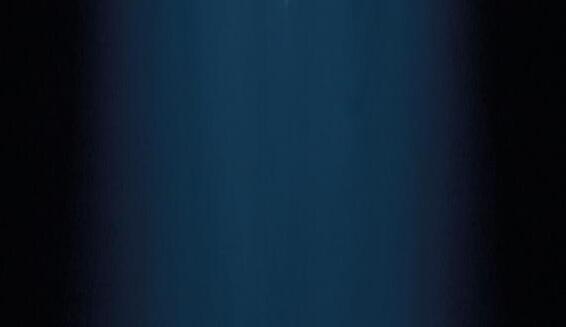

 Words by COLBY RA M
Words by COLBY RA M
YES
Scottish pop superstar Lewis Capaldi recently went out on tour with over 170 GLP flexible hybrid LEDs, as Headliner recently discovered…
Lewis Capaldi is currently touring the States after recently completing his biggest European tour to date, visiting arenas in 32 cities over two months.
Having played one of the last concerts before lockdown in March 2020, the Scot was out with a lighting package provided by Neg Earth, and new conceptual stage scenography orchestrated by Cassius Creative. This was constructed largely around GLP lighting solutions, notably a large grid of 102 powerful JDC1 hybrid strobes.
Cassius has worked with the artist’s long-term production manager, Nick Lawrie, since that earlier arena tour and came up with a brutalist concept, the basis of which debuted at two London O2 Arena concerts last September. This proved to be a first version for the tour proper, designed to promote the Broken by Desire to be Heavenly Sent album. As Cassius’s Dan
Hill puts it: “While those O2 stage shows were updated and reformatted for this year’s campaign, the foundations were set back in September.”
Production had been upscaled for the European leg, to the point that it occupied 14 trucks. One reason for this is the giant video ‘monolith’, which raises and lowers to the stage on a complex automation system (and at one point sees Capaldi using its roof as a B stage).
Hill explains that their focus was on delivering a “contemporary” feel rather than a traditional singer-songwriter type set: “We wanted it to be more progressive, playing with structures and shapes, and as the album artwork developed we updated lighting, scenic design and video content to suit.
“This [monolith] opens to reveal a kind of concrete brutalism, matching the
album artwork within it. Rather than have a video screen at the back and lights in front, we’ve flipped it to have a back wall grid of 102 JDC1 in which the video wall sits. We use the JDC1 a lot – it’s a quick ‘go to’ because we know exactly what it can do.”
The JDC1 grid provides the wider context in which the whole performance takes place, including the monolith of video content and ceiling of lighting within that. “We steered the creative elements of the video which was designed by FRAY Studio, but with a collaboration of creative direction by FRAY, us and Lewis,” continues Hill. “This ceiling of lighting inside is also very architectural. Tucked up inside that are battens to create a looming soft box of light which is often hidden and creates an eerie feeling through smoke and haze.”
“WE USE THE JDC1 A LOT – IT’S A QUICK ‘GO TO’ BECAUSE WE KNOW EXACTLY WHAT IT CAN DO.”
To achieve maximum impact, the JDC1 hybrid strobes are programmed in SPix Pro mode (62 DMX channels).
“We also used 56 impression FR10 Bars in the roof – they cross four trusses to create a big box, a column of light,” Hill adds. These were programmed in Mode 3 MultiPix (57 DMX channels).

To this, Cassius Creative added 14 of the more recent JDC family: JDC Line 1000, along with a single JDC Line 500. “This gives us a 14.5-metre low-lying line, set as a strip under the cantilevered band risers,” explains Hill. “It provides an unobstructed line of strobes as low back light on stage and they did a great job.”
As with all fixtures they were programmed in-house,
respectively in Mode 3 (168 channels and 84 channels).
“Programming in optimum mode provides a lot more creative flexibility,” says the LD. “With the back wall, for instance, we can use it simply as big block color as architecture, or for hits, or a lot more subtlety for the ballads, with softer waves of intensity and color. With the number of pixels available and quantity of different textures required, it made more sense to use expansive modes to provide subtle looks and image-based effects.”
Of the FR10 Bar, he says: “We wanted a big, ‘blocky’ top light that was not from a point source, so didn’t want to go down the traditional wash route. These are big and bright, and having the different individual cell zoom options to pick up various zoom
ranges was a bonus. With that big wall of JDC1 across the back and a big slab of video screen, it was important to have bold looks from the hidden source that could still cut through.”
Following North America, Capaldi’s tour returns to Europe and Scandinavia for the outdoor festival season, before heading off to Australia and New Zealand and then back to the UK for the final festival events of the summer.
GLP.DE

BY HARNESSING THE TRANSFORMER-BALANCED TECHNOLOGY
FEATURED IN THE ACCLAIMED 88RS CONSOLE, THE 88M ENABLES YOU TO ACHIEVE THE REVERED SOUND OF AIR, ABBEY ROAD AND CAPITOL STUDIOS IN YOUR HOME STUDIO OR PORTABLE SETUP.

At JBL, innovation is in our DNA. When it came time to take our iconic EON Series to the next level, we started with an advanced acoustic package featuring custom-engineered drivers, refined waveguide and ultra-efficient Class D amplification for smooth, consistent coverage and remarkable clarity at any volume, anywhere in the room. Then, we added features like Bluetooth 5.0 streaming, a 3-channel mixer, backlit LCD, dbx DriveRack Inside and JBL Pro Connect app control. The result: EON700 Series. Learn more at jblpro.com/EON700.
